Exciting Student Placement Opportunity – Join us in ‘Future-proofing’ the Severn Estuary
Exciting Student Placement Opportunity – Join us in ‘Future-proofing’ the Severn Estuary
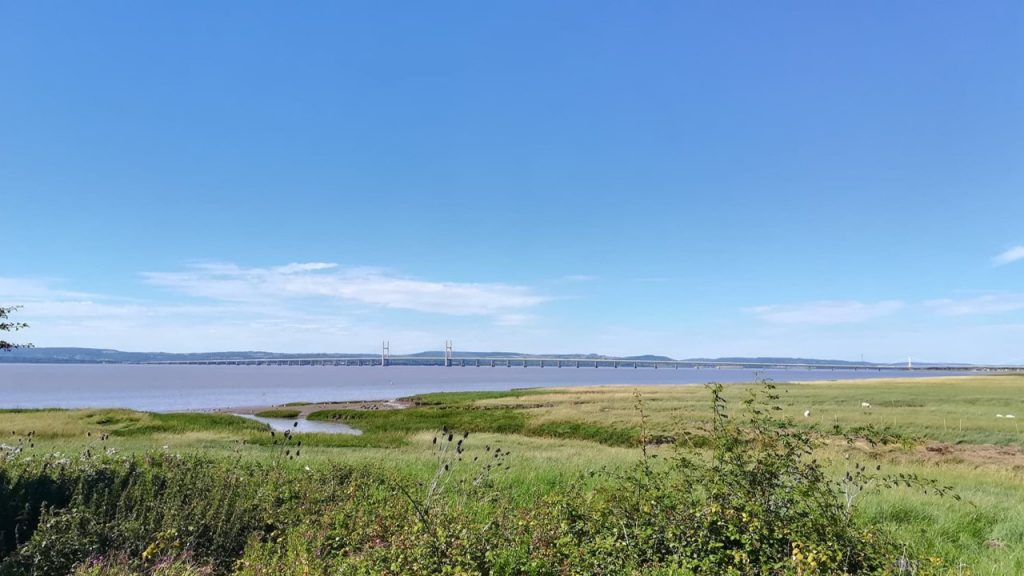
We’re pleased to offer an exciting student placement as part of our “Future Proofing the Severn Estuary” project. Hosted within Cardiff University’s School of Earth and Environmental Sciences and funded by the Nature Networks Programme through the National Heritage Lottery Fund, this project focuses on enhancing the protection and resilience of the Severn Estuary Marine Protected Area (MPA).
As a placement student, you’ll play a key role in updating our State of the Severn Estuary Report—a crucial resource for environmental monitoring and decision-making. You’ll help develop an evidence and data collection plan and work directly with stakeholders to identify data needs, gaps and resolution requirements for decision-makers.
You’ll be part of a dedicated and supportive team, gaining valuable experience in data gathering, stakeholder engagement, and environmental reporting. The role offers flexible, blended working and will involve travel across the Severn Estuary area.
This is a fantastic opportunity for a student passionate about marine conservation, sustainability, and environmental data. Applications are open until 20th June. For more information about the role and how to apply, click the button below.
Join us and help shape a sustainable future for one of the UK’s most iconic coastal environments.
Aust Cliffs to Severn Beach: reflecting on the passage of time
Written by Dr Rhoda Ballinger, SEP Chair
Rhoda delves into deep time at Aust Cliffs, visits four estuary crossings from different periods and reflects on coastal change and flood risk around Severn Beach.
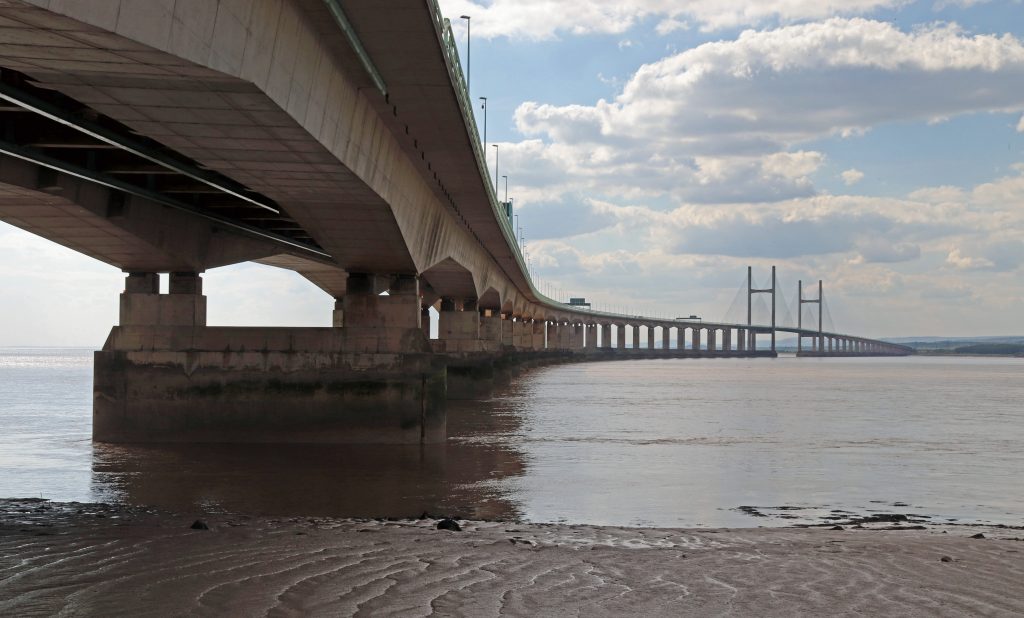
Photo: The Prince of Wales Bridge crossing over some of our estuary’s most treacherous waters
Introduction
Since becoming SEP Chair in April 2024, I realised I’d completed a dozen walks, but hadn’t yet explored the shores of several local authorities around the Estuary. With this in mind, I decided to focus my next few walks on filling those gaps. So, this month, having heard about various management projects along the South Gloucestershire coast in recent SEP meetings, I decided to explore the shore between Aust and Severn Beach.
On one of those fine sunny days in early May, I ventured out with Geoff, my husband, to explore the shore between the bridges on the English side of the estuary. Once again to inform my article, I’m grateful to the members of the community for sharing their rich local knowledge and history. Val George has been involved with the Pilning & Severn Beach History Group since its inception in 1999 and Alderman Peter Tyzack, vice-chair of Pilning and Severn Beach Parish Council, is no stranger to SEP, having been Chair of our Steering Group.
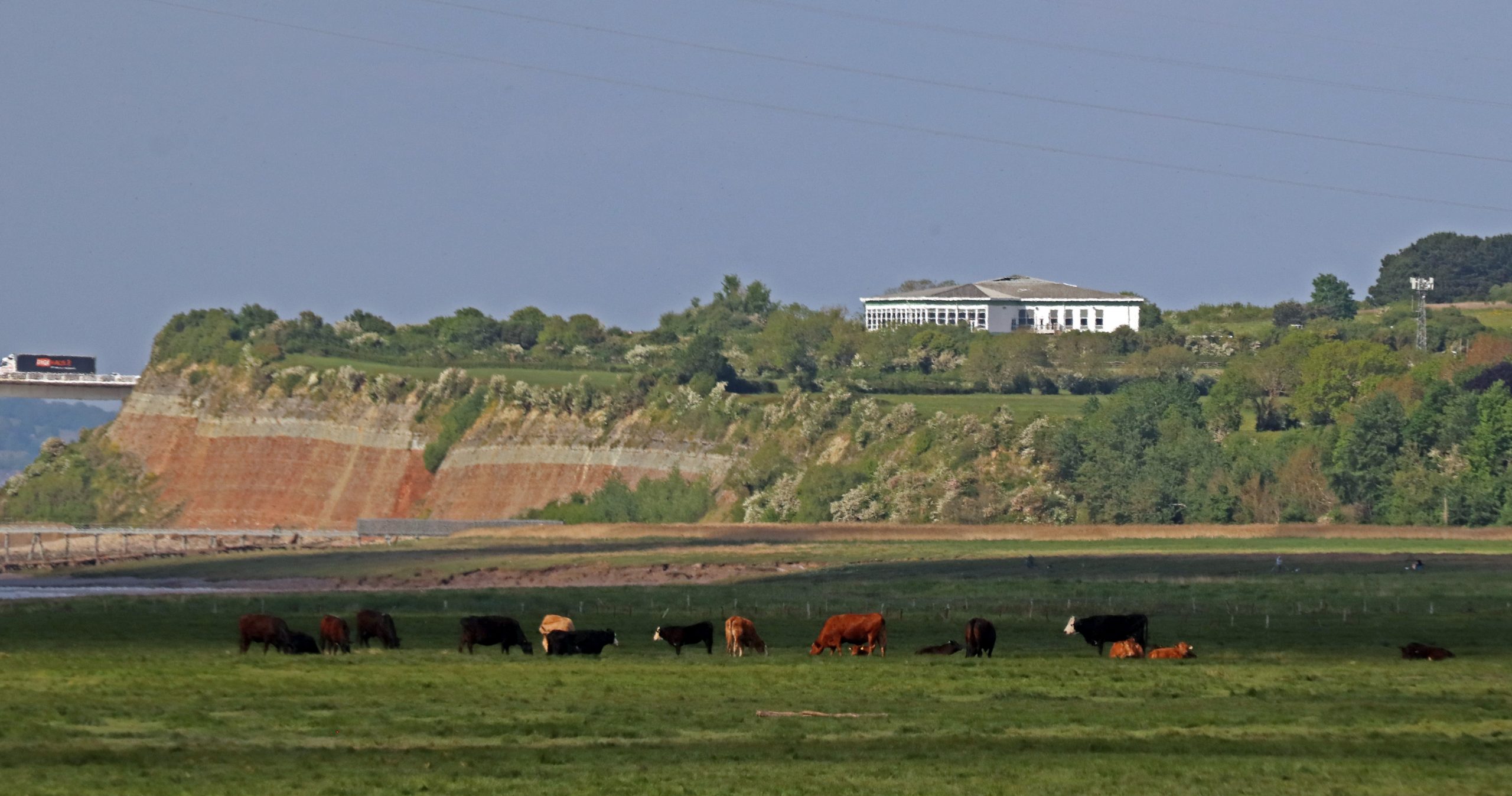
Photo: Cattle grazing on the marshes in front of the iconic Aust Cliffs
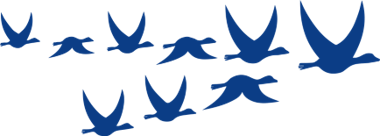
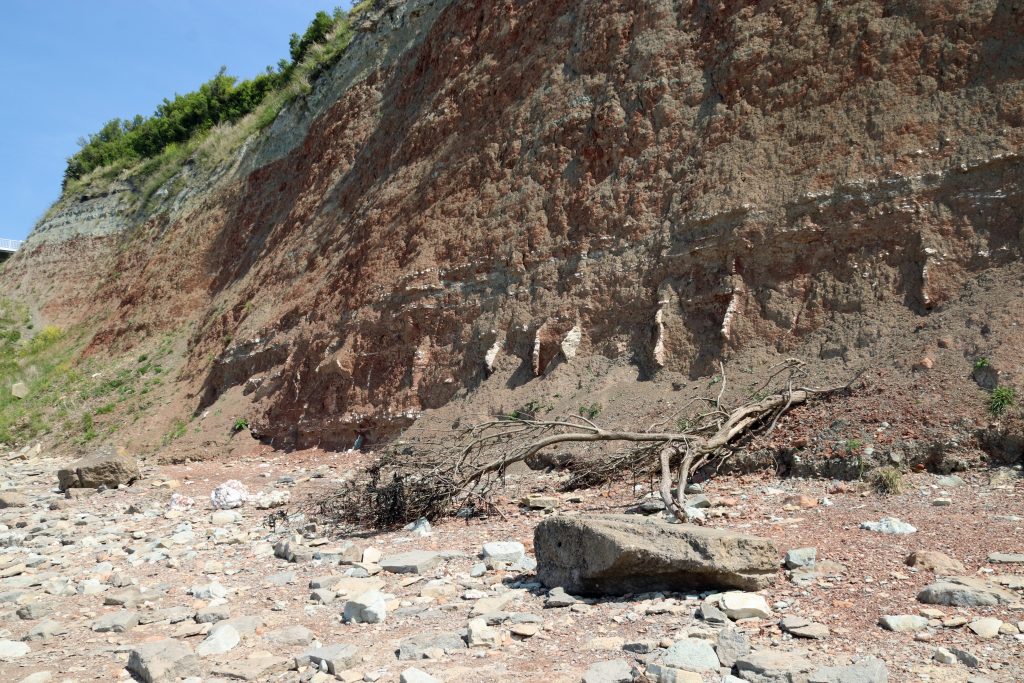
Photo: The impressive Aust cliffs showing evidence of active erosion
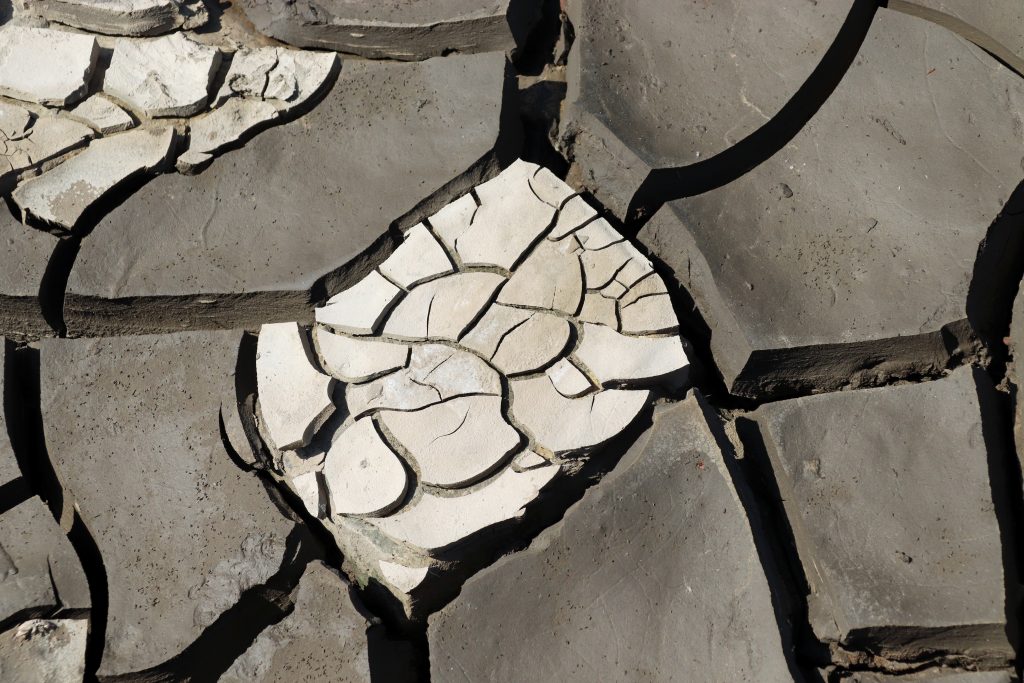
Photo: Mud cracks on the current foreshore

Aust cliffs – a glimpse into deep time
We started at Aust Cliffs, the sister site to the Penarth-Lavernock shoreline which I’d visited on my first e-news walk. I was especially excited to visit these cliffs, renowned for their geological significance. Designated as a Site of Special Scientific Interest (SSSI), they offer one of the most remarkable records of environmental change from around 210 million years ago, when rising seas flooded a once-arid desert landscape. These days they’re a mecca for fossil hunters, containing the famous ‘Rhaetic Bone Bed’ with its incredible wealth of remains of fish and marine reptiles/ dinosaurs. What might we find?
As we neared the shore, the towering cliffs rose above us, showcasing a striking sequence of coloured strata—from red and green marls to cream and white limestones—that was truly impressive. From a distance, it might have looked like a giant slice of sponge cake, but up close, there was fascinating geological detail. White veins jutted out from the ancient red desert rocks, resembling the worn, jagged teeth of some long-lost giant beast. These were made of gypsum, formed when highly salty water evaporated in shallow, temporary lakes (playas), similar to what occurs in the Dead Sea today. Glittering chunks of gypsum lay scattered across the shore like discarded chess pieces, having tumbled from the cliff face above. As we continued along the beach, carefully skirting recently fallen trees, I questioned the official claims of ‘slow’ erosion—prompting me to take a cautious step back. Later, I also wasn’t surprised to learn that for reasons of safety the first classic sketch of this cliff in the 1820s, had been made from a rowing boat offshore!
The beach here quickly morphs into soft mud – and, determined not to have another Severn Estuary mud immersion experience after my Severn Bore visit, I focused on studying treasures within the mid-shore. To my surprise, the muds were a spectacle in themselves. Mud cracks, formed from the drying out of mud as the tide had waned, had created a fascinating display of intricate and complex polygonal patterns. From every angle there was a cubist masterpiece – a shame our visual artist friend, Heather Green, who studies and draws inspiration from our intertidal areas, wasn’t with us.
Having exchanged a few words with a couple of fossil hunters, who were leaving with a plastic bag of goodies, we scoured the beach. No sharks’ teeth or bones from dolphin-like ichthyosaurs and long-necked plesiosaurs today. We had to make do with observing a motley collection of marine shells—mostly fragments of oysters and scallops—from boulders that had fallen from the cliff. With little time or expertise, we couldn’t examine the site’s renowned fossil insect deposits—the richest Triassic insect locality in Britain. As a small consolation, though, a pair of peacock butterflies performed a brief pas de deux as we left.
Old estuary connections: The Severn Bridge and the Old Passage
We carefully negotiated our way over a sea of boulders to get a rare view of the undercarriage of the bridge, now definitely a senior, at sixty years old. Here, it was at its most impressive, rising elegantly above the still, brown waters of the Severn. However, whilst the photo might suggest a peaceful, tranquil view, we struggled to appreciate the scene against the constant roar of traffic. More disturbing, however, is the news today, that new weight restrictions have come into force on the bridge. Hopefully, a technical solution will be developed soon to keep this vital bridge safe and functioning.
Moving along the shore toward Old Passage, there were more mud cracks, mysterious wooden structures jutting out into the water, and countless views of the bridge—keeping my camera busy the entire time! Before too long, the boom of motorway traffic gave way to the enchanting calls of reedbed birds and the graceful reeds, wafting gently in the light breeze, provided ever more photo opportunities.
We emerged out of the reed beds to spot the decaying wooden skeleton of the old slipway, which stretched across the marshes and mudflats before disappearing into the calm, brown waters of the Severn. This was the site of an ancient estuary crossing, dating back at least to Roman times—or possibly earlier—serving as a vital, though sometimes treacherous, link between Aust and the Beachley Peninsula. Given the calm still waters on our visit, it was difficult to imagine how perilous this crossing had been. Despite fatal accidents, a small car ferry had operated here until the Severn Bridge opened in the 1960s.
Memories of the ferry terminal live on, immortalised by Bob Dylan’s visit and featured on one of his album covers, as well as in the 2005 documentary No Direction Home. In my husband’s family album, there’s also a photo of the MV Severn Queen—one of the last ferries to serve here along with her sister ship, the MV Severn Princess, which carried Dylan across the estuary. No longer here, but now lying at rest on the other side of the estuary at Chepstow, we had to make do with exploring what remains of the slipway structure and its rusting artefacts.
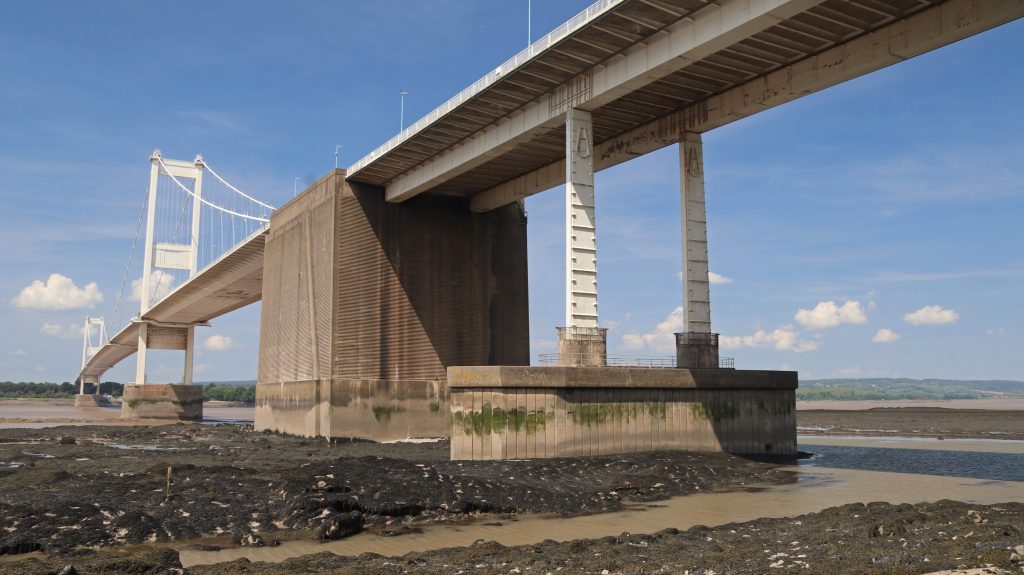
Photo: A rare view of the undercarriage of the Severn Bridge at near low tide
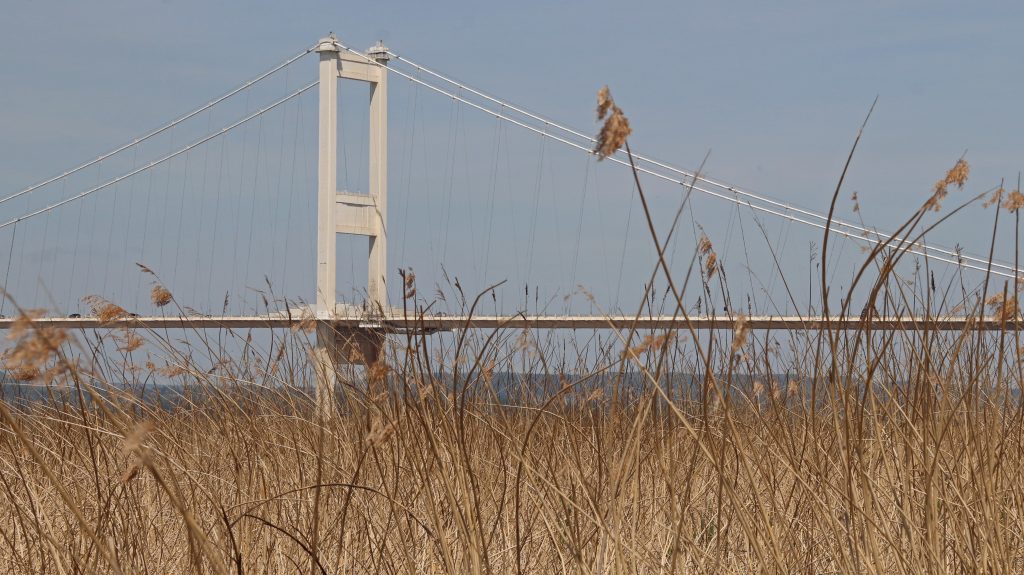
Photo: Looking through the reed beds back at the Severn Bridge
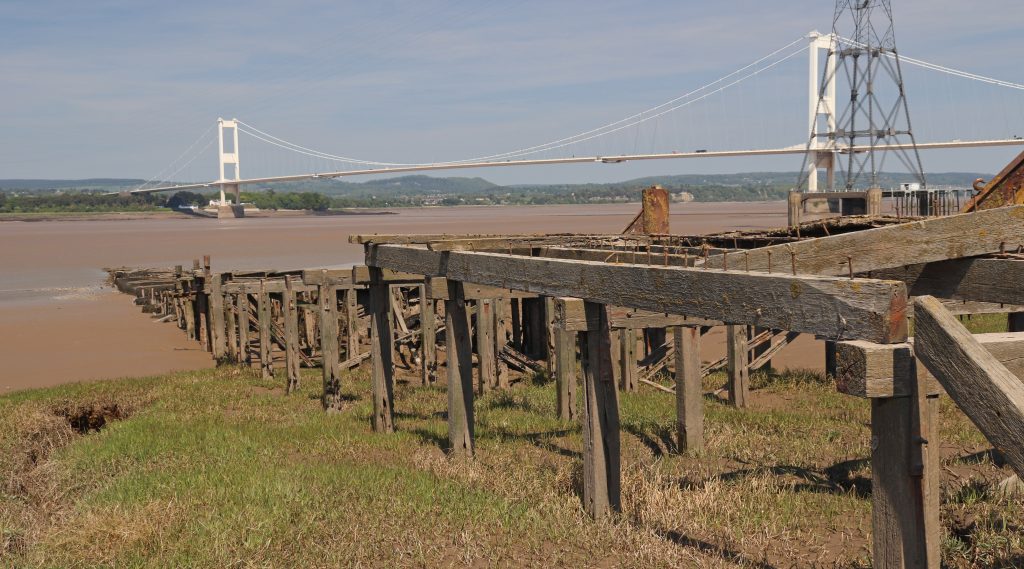
Photo: The wooden remains of Old Passage, marking the former ferry route across the Severn
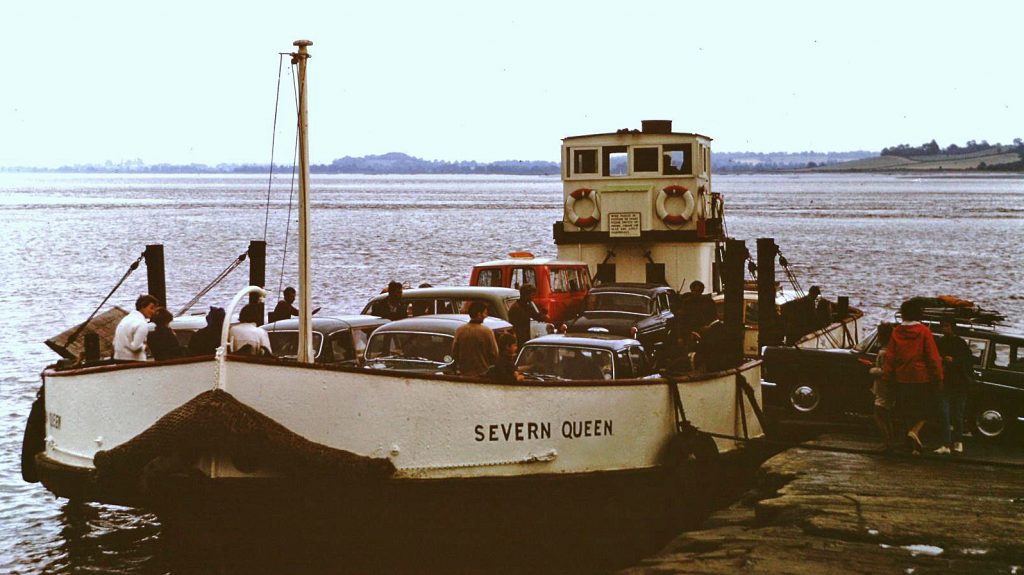
Photo: MV Severn Queen, one of the three last ferries to use Old Passage (A.L. Ballinger)
Between the bridges – agriculture and ecology dominate
Along Passage Road and further on along the Severn Way atop the flood embankment, we enjoyed some ‘typical’ estuary landscapes – great wide-open vistas across broad, low-lying verdant marshes with distant views of the bridges. There were also wonderful hedgerows, adorned with frothy white cow parsley and extensive patches of white scurvy grass brightening up the marsh edges. Agricultural pastureland gave way to conservation areas, including the Pilning Wetlands, created and relandscaped from sections of the old military firing range and sheep grazing fields at Northwick Warth. Here, as the website suggests, a telescope would have been useful. I just made out a flock of Canada Geese, but frustratingly, the distant waders and dabbling ducks eluded me. In season and with proper equipment, I’m told you can spot a wide variety of birds here, including curlews, dunlin, and snipe. Indeed, over two hundred different species have been recorded including rare Glossy Ibis and Red Necked Phalarope. No wonder so many birders were out and about!
As we approached New Passage, I was delighted to be able to recognise a couple of shelduck resting on the muddy banks of Chestle Pill, a deep tidal creek which meanders across the marsh. The scale of the extensive engineering around the creek pointed to serious flood risk concerns though. As I later discovered the recent multi-million-pound Avonmouth and Severnside Enterprise Area (ASEA) Ecology Mitigation and Flood Defence Project has provided for lots of new defences including innovative design features such as the see-through glass barriers you can see along this stretch.
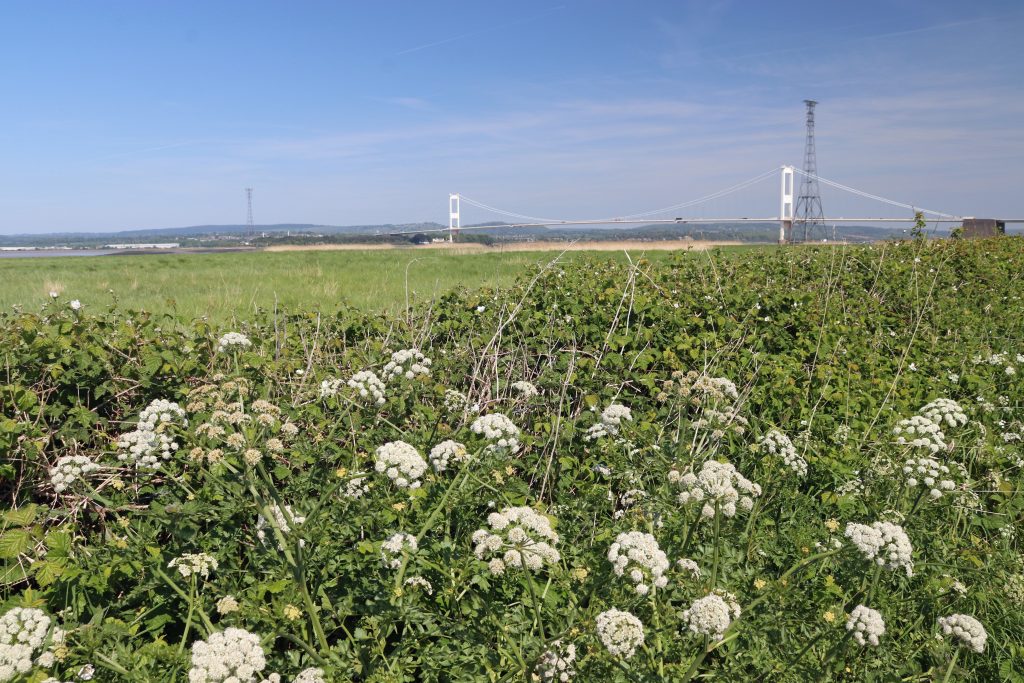
Photo: Floral interest along the way – wonderful hedgerows of wild cow parsley
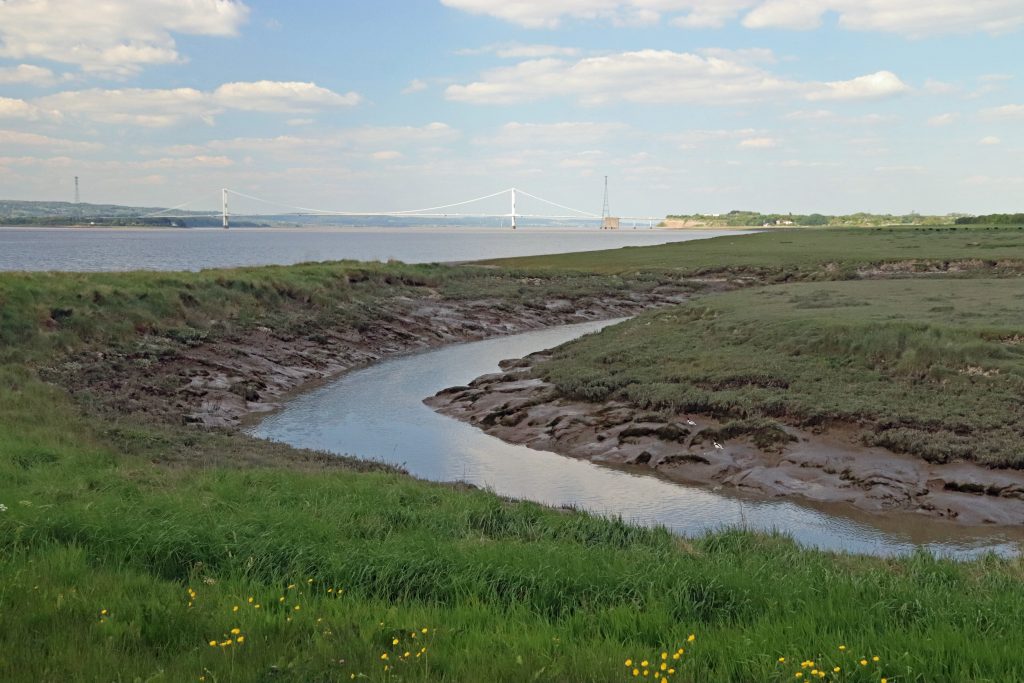
Photo: Chestle Pill at the southern edge of Northwick Warth
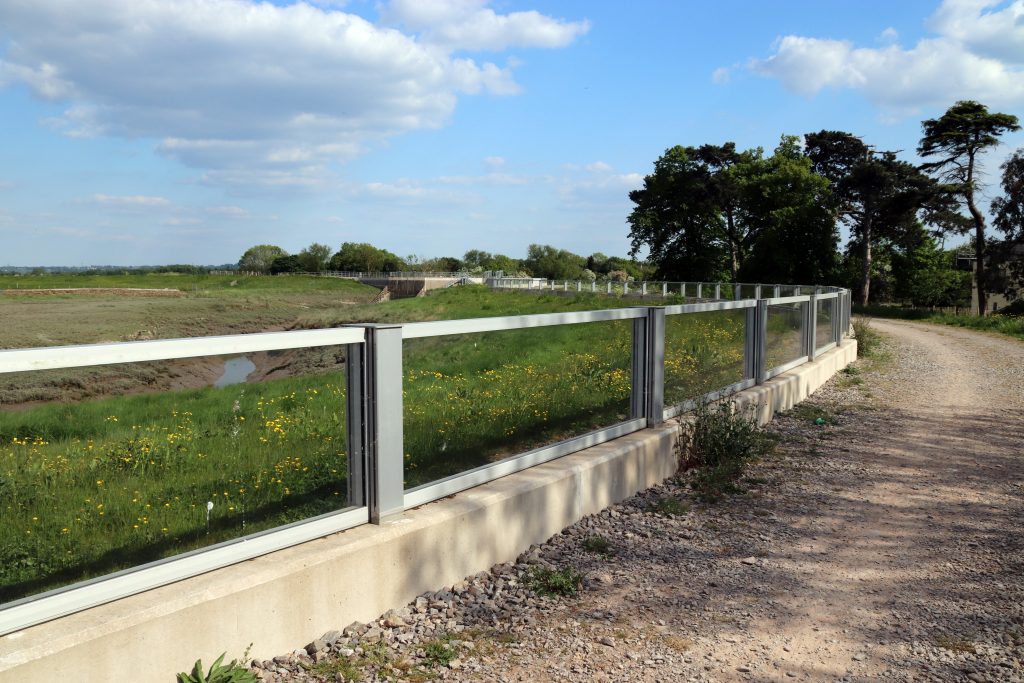
Photo: See-through coastal defences along Aust Wharf Road
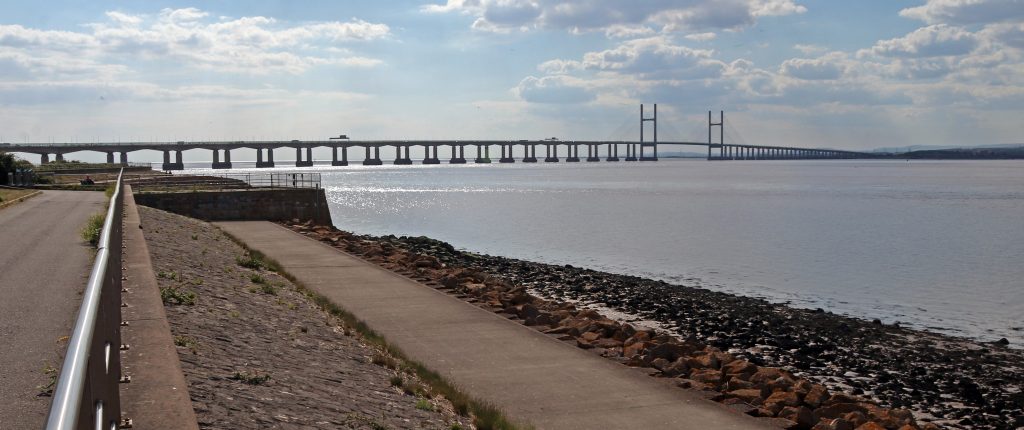
Photo: The remaining stump of New Passage with the Prince of Wales Bridge in the distance

Photo: Severn Lodge Farm, one of the remaining old buildings at New Passage
More recent estuary connections: New Passage & the Prince of Wales Bridge
We continued along the path that runs atop a stark stone-and-concrete sea wall, tracing the line of the old Binn Wall—built in 1815 to replace earlier 17th-century defences. Although its appearance on 19th-century maps might suggest it was indestructible, the Binn Wall has been upgraded and raised several times in response to flooding. Today, the newly improved wall serves as a promenade, offering locals and visitors sweeping views of the Prince of Wales Bridge. As we ambled along, we noticed a small kink in the seawall. Goodness – was this New Passage? It’s certainly nowhere near as eye-catching as the relic structures at Old Passage. However, as we were to learn from the informative plaques and the New Passage Heritage Trail, its history is every bit as fascinating.
New Passage offered a more direct crossing and, although there’d been on-and-off operations here since the early 17th century, it was the arrival of the Bristol and South Wales Union Railway in 1863 that truly transformed its fortunes. Locomotives pulled carriages onto a wooden jetty stretching well out into the estuary, allowing rail passengers to easily board the ferries to Portskewett. Despite this, the crossing was notorious for its harsh conditions. Indeed, Thomas Telford famously described it as “one of the most forbidding places at which an important ferry was ever established.” Delays were frequent – so much so that a large hotel was built for waiting passengers. However, it was the opening of the Severn Tunnel in 1886 which brought ferry services here to an end. The pier was dismantled shortly afterwards. Today few original buildings from New Passage’s heyday remain although, Severn Lodge Farm—once a lodging place for visitors and notable for its impressive twenty-four chimneys— is still a local landmark.
Beyond New Passage, we eventually reached the Prince of Wales Bridge, which was even more imposing at close quarters than at a distance. Amid the roar of traffic overhead, we followed the track beneath the bridge, taking in its immense scale from this dramatic new perspective. Wow! The supporting pillars are indeed huge and the whole structure is so much sturdier than its younger upstream cousin. It’s almost as if the Severn Bridge is the graceful ballerina, and this, the tough, almost invincible rugby player. There were plenty of photo opportunities too as we tried to capture the bridge’s graceful, almost serpentine curves and its striking presence. Then, just beyond the bridge, we spotted the famous iron pipe, which, as Peter Tyzack later explained, is the outfall for fresh water pumped from the Severn Tunnel.

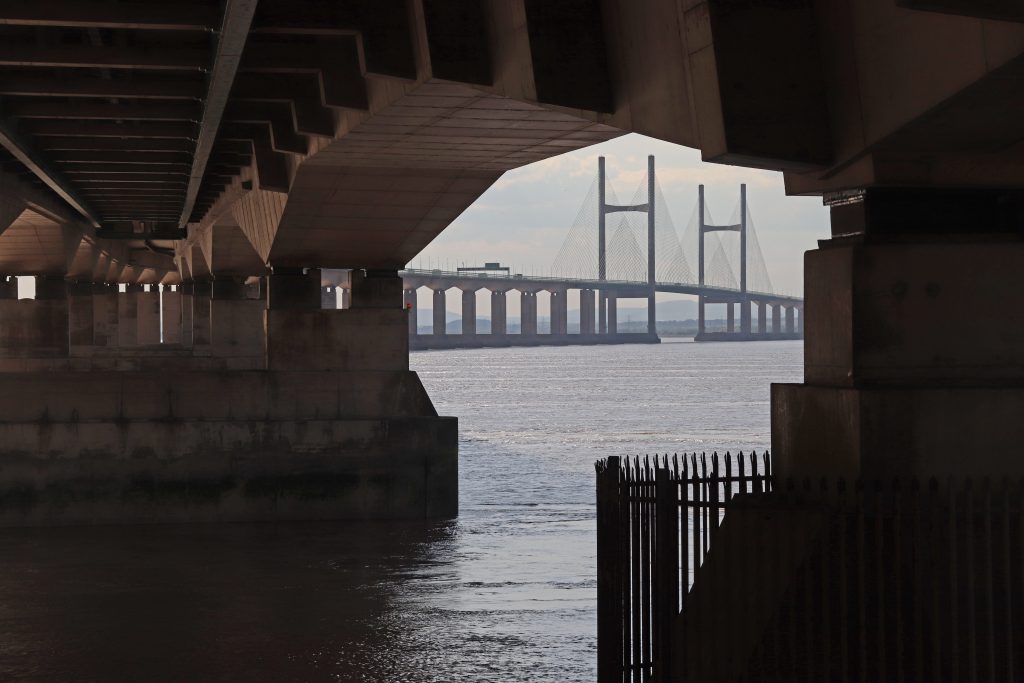
Photo: A new perspective of the Prince of Wales Bridge – from below!
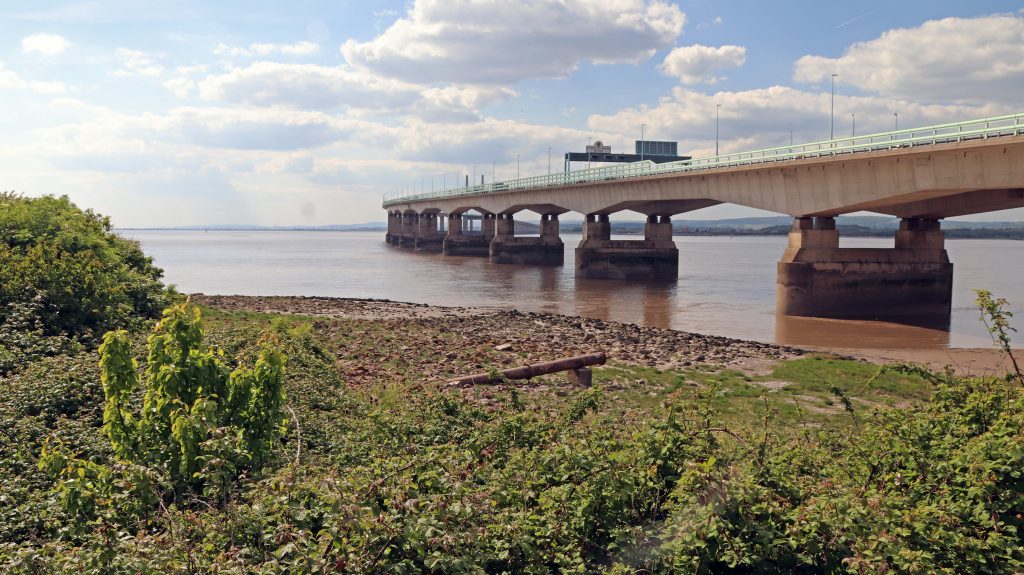
Photo: The outfall pipe from the Severn Tunnel with the PoW Bridge behind
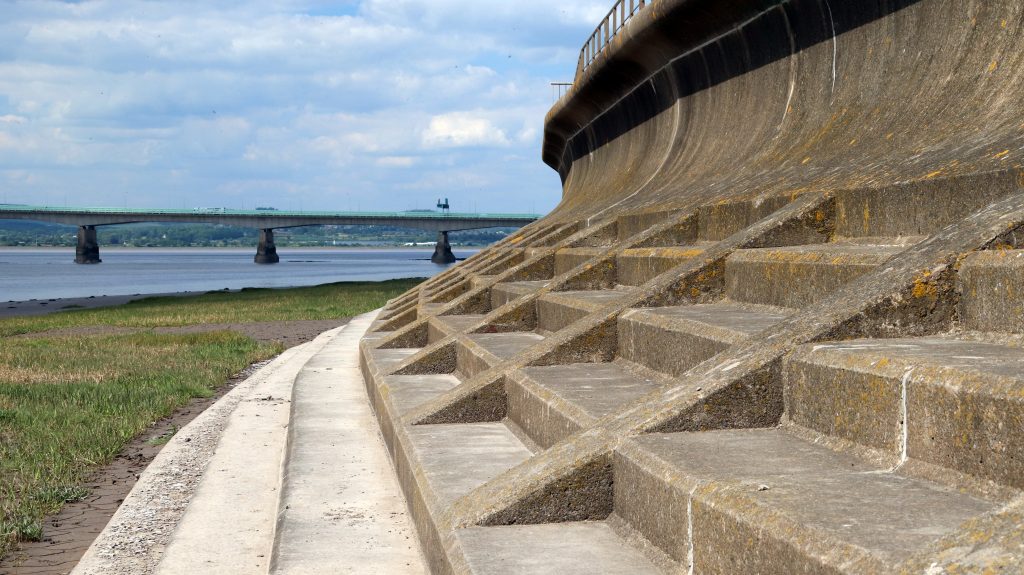
Photo: The green shore fronting the sea wall at Severn Beach
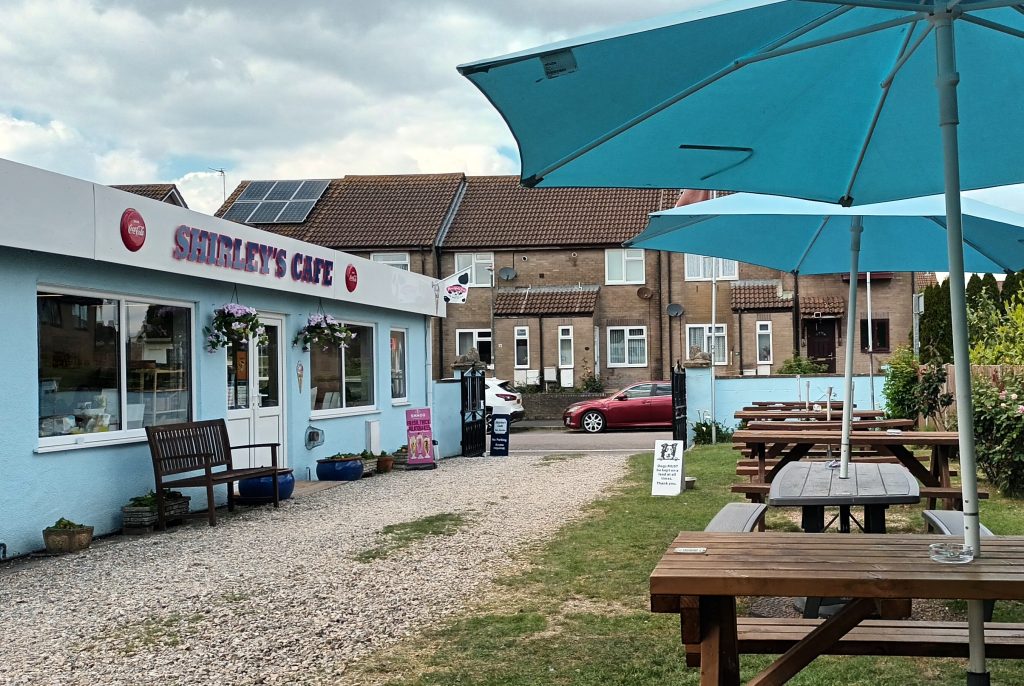
Photo: Shirley’s café – almost the sole reminder of Severn Beach’s heyday as a seaside resort
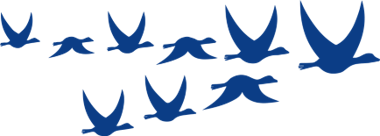
Severn Beach – Seaside tourism, suburbia and industrial change
Following the promenade, we were joined by a growing number of fellow walkers as we approached Severn Beach. I was slightly disappointed, though not at all surprised, to find it wasn’t a traditional, touristy beach. After all, this is the Severn Estuary! Instead, mud, shingle, saltmarsh and even more mud. A great haven for wildlife and birdlife though, not that we had time to study these now, having spent more than a few minutes en route gathering elderflowers to make my annual cordial. We couldn’t miss the hulks of driftwood—entire tree trunks—strewn along the shore, stark reminders of why such substantial sea defences are needed here. Nestled, perhaps even cowering, beneath the towering defences, rows of neatly laid-out modern housing estates stretched as far as the eye could see.
Severn Beach once truly lived up to its name, drawing thousands of visitors each summer—as we learned from the display inside Shirley’s Café, one of the few remaining buildings from the village’s heyday as a seaside resort. It even aspired to be the Blackpool of the Southwest! Thanks to the vision of local entrepreneurs and the opening of the station in May 1922, Severn Beach became the go-to place for day trips for people from Bristol and beyond. Development opportunities, akin to those along the Costa Blanca in the 60s, were suddenly unleashed. A grand hotel, cafés, pubs, shops and wooden bungalows sprung up. Attractions, including a fun fair, boating lake and the much-loved Blue Lagoon swimming pool, alongside donkey rides, beauty contests and dance competitions drew in the masses. There were a few issues, however—local hearsay claims that the sand brought in to improve the shingle beach was washed away by the first high tide. Then, after a highly successful second season in 194, the highest tide in over a decade caused widespread damage, turning wooden bungalows into floating houseboats. It was, however, the development of the motor car and the rise of foreign holidays in the 1960s which caused the resort’s final demise. The boating lake and Blue Lagoon were demolished in the 1970s, ironically making way for improved sea defences to protect the growing number of houses in the area.
Val and Peter, like much of the local community are certainly proud of the area’s history. We followed Val’s local history group’s heritage trail, discovering a series of informative plaques and locating key sites from the resort’s past, including the boating lake and Blue Lagoon—now peaceful, grassy seafront areas. With the current popularity of open-air swimming, some residents might hope to see the lido restored. For now, the resort’s revival includes the recently refurbished (2018) Tea Cottage and the anticipated opening of the Severn Beach Miniature Railway, later this year.
Standing at the end of the promenade, looking toward Avonmouth as our walk concluded, we took in a starkly different, more industrial landscape—where wind turbines, chimney stacks, and large factories dominate the skyline. Peter notes this area has changed quite considerably over the last few decades. Thanks to major investment in improved transport infrastructure, this area has been transformed into a key energy hub. It now hosts the 1,140 MW Seabank gas-fired power station and the Severnside Energy Recovery Centre, which converts waste into electricity enough to power roughly half the homes in South Gloucestershire. According to Peter, there’s an old outfall pipe from the 1960s Imperial Chemical Industries (ICI) Severnside Chemical Plant and fertilizer factory, which operated until the early 1990s. Apparently some of the foreground isn’t natural: Peter explains that much of it is made up of demolition waste, likely dumped there cheaply and conveniently to serve as a basic sea defence. He also notes significant accretion along the coast here, especially since the construction of the Prince of Wales Bridge. I wonder: was this an intended effect, or a lesson we should consider for future large infrastructure projects in the estuary?
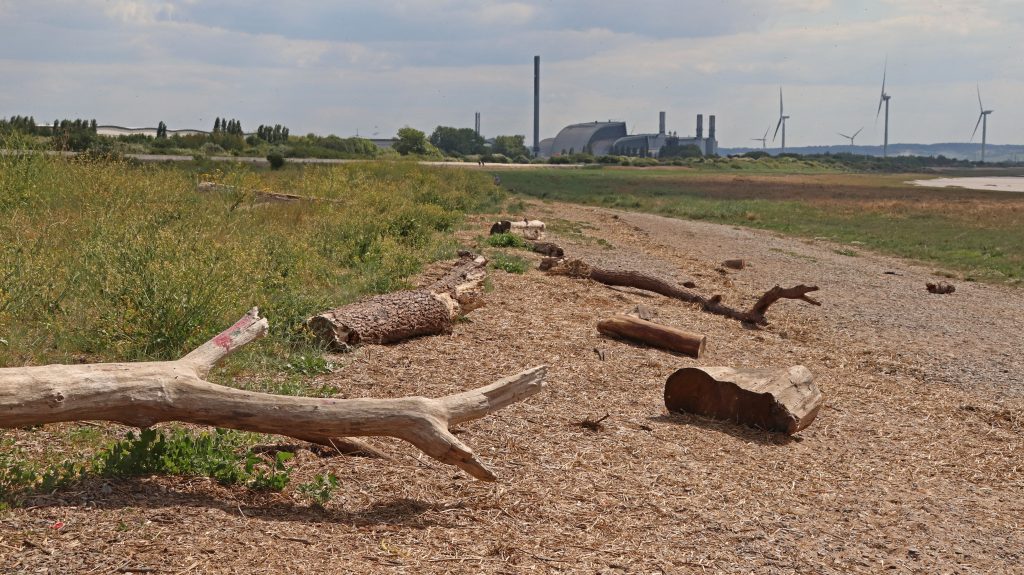
Photo: looking across the foreshore at Severn Beach towards Avonmouth

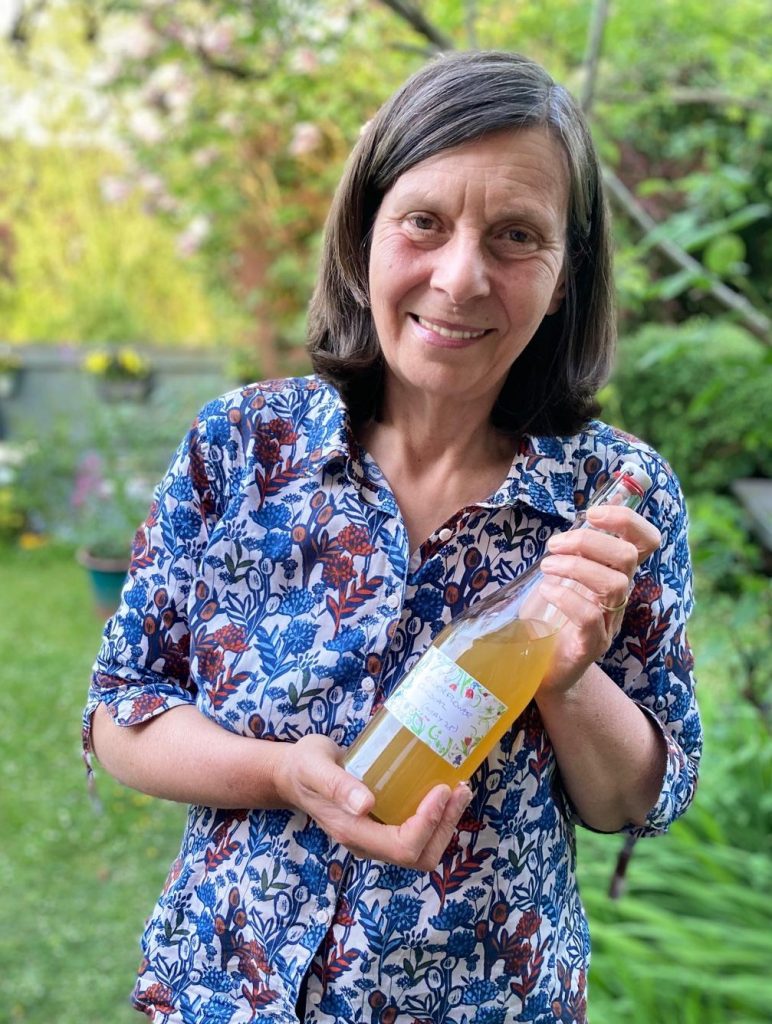
Photo: My Severn Beach/Pilning 2025 Vintage Elderflower Cordial
Further reflections and conclusions
Once again, it had been a fun and fascinating day out. What’s truly interesting is not only how much this stretch of coast has changed over the past century, but how quickly and dramatically the economic fortunes of individual communities have shifted—especially with the arrival of major transport infrastructure. While New Passage and Old Passage were made obsolete almost overnight by the Severn Tunnel and Severn Bridge, the opening of a station at Severn Beach transformed a quiet rural area into a bustling seaside resort nearly as rapidly. The impact of the longer-term economic development of the Avonmouth Severnside Development Area on this stretch of coast is perhaps a little less tangible, although demand for housing is obvious, and concerns about the possible impact of ‘huge warehouse construction on the water table’ trouble Val.
Wherever you go along the estuary, there are countless stories to be told. From my experience, you’ll always find proud locals eager to share their knowledge, concerns, and passion for their stretch of coast. The journey from Aust to Severn Beach has been no exception—both Val and Peter shared far more information than I can do justice to here. Val’s deep enthusiasm for local history and Peter’s genuine love for living on this wild coastline were truly inspiring.
Despite Val’s worries about flood risk, I’m confident that the major investments behind the ASEA Ecology Mitigation and Flood Defence Project and the new South Gloucestershire nature-recovery initiative, Linking the Levels, will help secure a bright future for this coast and its communities. Meanwhile, I have a few bottles of homemade 2025 vintage Severn Beach/Pilning elderflower cordial to enjoy—a perfect reminder of another special day spent exploring the Severn.

Further information
The New Passage and the Pilning wetlands
Severn Beach Circular via Aust and Northwick walk
Explore the New Severn Estuary Biosecurity Plan

This year, to mark Invasive Non Native Species Week, we are excited to announce the launch of the Severn Estuary Biosecurity Plan—a collaborative and proactive strategy designed to address the growing threat of Invasive Non-Native Species (INNS) across the Severn Estuary.
This plan represents a united effort to safeguard one of the UK’s most dynamic and ecologically significant estuarine environments, recognised for its nationally and internationally important habitats and wildlife.
Led by the Severn Estuary Partnership, and funded by Natural England and Natural Resources Wales, the Biosecurity Plan has been co-developed with a wide network of stakeholders, including local authorities, marine industries, environmental NGOs, and recreational user groups. The Severn Estuary Partnership would like to thank all the individuals and organisations who dedicated their time to developing this plan in our workshops and one-to-one sessions.
The plan takes a pathway-based approach, targeting the main routes by which INNS are introduced and spread. It focuses on six priority sectors: recreation, angling, commercial operations, marinas, habitat and species restoration and field research and monitoring.
To support implementation, this dedicated online resource is hosted on the Severn Estuary Partnership website. This includes sector-specific guidance, practical tools, and actions to help make biosecurity more accessible, effective, and embedded in day-to-day activities.
Looking ahead, the next phase will include targeted outreach and training sessions, monitoring and evaluation of uptake and effectiveness and continued support for local users and stakeholders to adopt and champion biosecurity best practice.
To explore the full plan, access resources, or get involved, visit: www.severnestuarypartnership.org.uk/biosecurity/ or email us at severn@cardiff.ac.uk
To learn more about Invasive Non Native Species Week, click here.
Severn Tidings 2024/25 – Celebrating 30 Years of Partnership
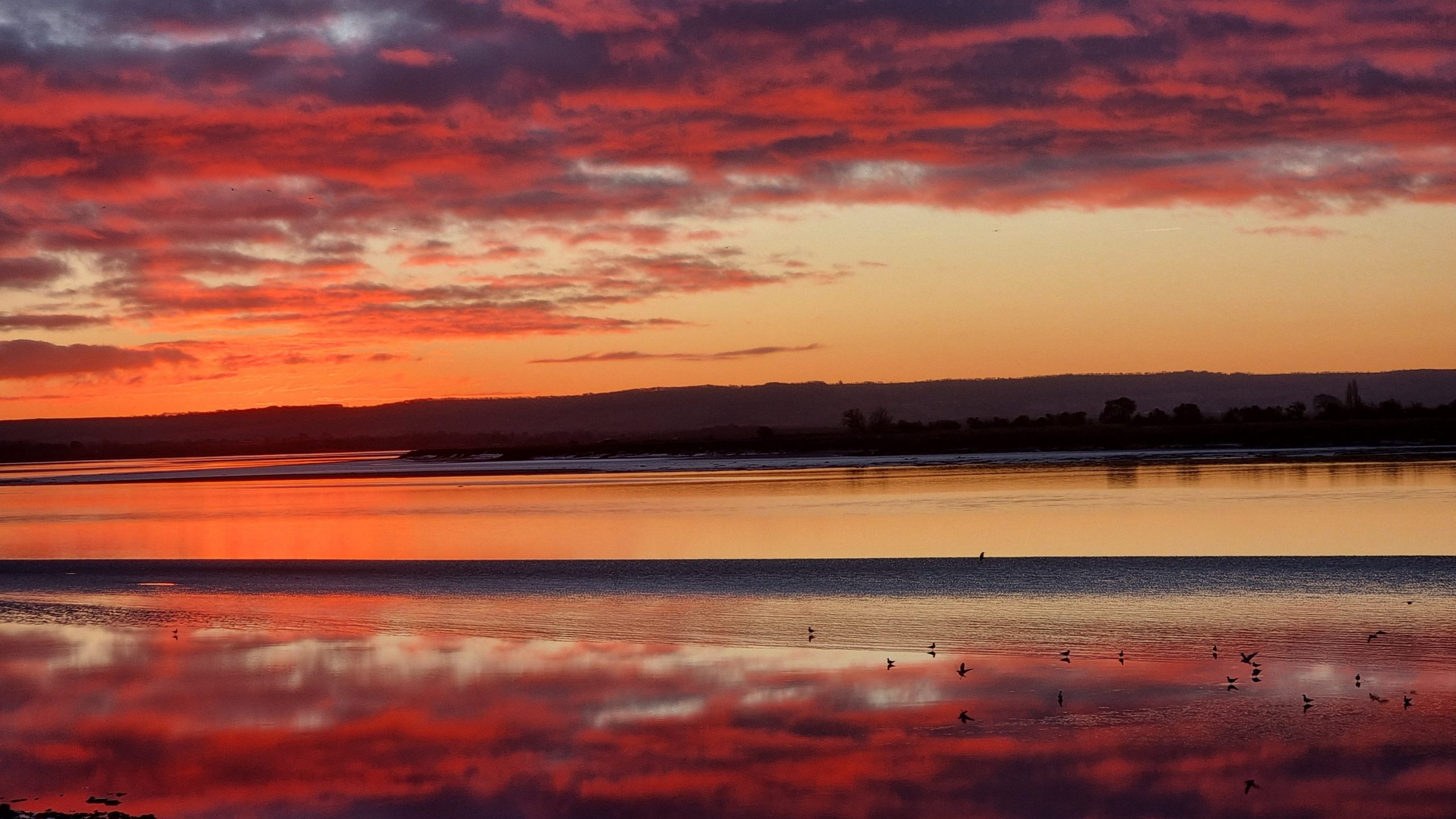
The Latest Issue of Severn Tidings is Here!
We’re excited to announce the release of Severn Tidings 2025! This special 30th-anniversary edition celebrates the Severn Estuary Partnership’s work over the past three decades, featuring:
- Photo of the Year – A breathtaking winter sunrise over the Severn
- SEP Updates – Our new Severn Estuary Biosecurity Plan
- Bird Aware Severn – Protecting vital habitats for migratory birds
- Litter Free Coast & Sea – Reflecting on nine years of work in Somerset
- Saltmarsh Restoration & Climate Adaptation – Groundbreaking projects for a resilient future
Maritime nostalgia along the Severn Way: Purton to Sharpness
Written by Dr Rhoda Ballinger, SEP Chair
This month Rhoda takes a walk along the Severn Way in Gloucestershire to discover a delightful section of shoreline between Purton and Sharpness, home to the famous Purton Ships’ Graveyard.

Part of the Purton Ships’ Graveyard with the estuary mudflats in the background
In researching locations for this month’s walk, I not only stumbled across a website pointing me in the direction of the top five walks in Gloucestershire, but also another informing me that Sharpness Docks have just celebrated 150 years since their opening. So, it seemed timely to explore this part of the estuary, particularly given that next month we’re going to be in Gloucester for the Severn Estuary Forum, at the other end of the Gloucester and Sharpness Canal. It was also an opportunity for me to touch base with one of my former students, no less than ‘Barney’ (Paul Barnett, Chair of the Friends of Purton) to find out more about the Purton Hulks, one of the Estuary’s key maritime historical sites. So, one reasonably sunny Saturday, I set off to sample the section of the Severn Way between Purton and Sharpness and to delve into some of the estuary’s maritime past.
Sampling the Severn Way: the tow path
Arriving at Purton car park, I felt I’d walked into a neatly laid out model village. As I admired the sprucely painted cottages, the attractive little church and the pseudo-classical styled canal bridge keeper’s house, I half expected Rosie and Jim or Postman Pat to appear. There were certainly quite a number of colourfully painted narrow boats trundling along the canal but there was also a fair number of kayakers and paddle-boarders. Together these kept the swing-bridge operator extremely busy, much to my initial fascination, but my later frustration, when trying to cross the canal to retrieve my long-awaited lunch from the car.
I can certainly recommend a stroll along this section of the old tow path along the Gloucester to Sharpness Canal, although at a weekend you certainly won’t be alone as cyclists and fellow walkers are aplenty. There’s not only water-based activity to entertain, but, at this time of year, also glorious hedgerows abounding with autumn fruits – if only there’d been time to pick some more blackberries, elderfberries and even sloes. I did manage to salvage some fresh mint leaves though and we enjoyed Severn mint sauce later in the day with our Welsh lamb! Image Severn gin though?! I digress …. Breaks in the hedgerow revealed occasional glimpses of the Estuary itself – mud flats were emerging with a falling tide and across the waters the reddish colour of the cliffs near Lydney was just visible against a rather dull grey sky. Enjoying the warm autumn sunshine and the gentle putting sound of the narrow boats gliding along the canal, it was difficult to imagine this canal in its heyday when it was the main artery for ships between Sharpness and Gloucester. Built to avoid treacherous tidal waters, sandbanks and the infamous meander of the Severn around Arlingham, the canal, when opened in 1827, was the broadest and deepest in the world no less! A proper ship canal which enabled all sorts of vessels including even oil tankers to reach the inland port of Gloucester, where we’ll pick up the story in our next walk. Even up until the 1960s the canal had been busy with commercial traffic. The occasional bollard and waymark are some of the few reminders of this important maritime past, all immaculately tidy thanks to the current owners, the Canal and River Trust.


The Upper Swing bridge and ornate bridge keeper’s house at Purton

A tranquil scene along the Gloucester and Sharpness Canal

A ferro-concrete barge, Hulk FCB 68, rising above the grassy waves. The National Historic Ships website notes ‘This was one of thirty nine such vessels built during World War II. These concrete barges were the test beds for the Mulberry Harbour temporary and portable harbour system for the D Day landings.’

Visitors exploring a ferro concrete barge, FCB77, built in Barrow in Furness in 1941 and beached 1962

The last of the Purton collection, another ferro concrete barge built in Barrow in Furness, FCB75, beached here in 1965. Barney informs me that she’s lying above the 1900 Monarch, the largest Severn Trow ever built – more about those in my next article
Maritime nostalgia – Purton Hulks and the old Severn Railway Bridge
I soon arrived at the information board introducing the Purton Hulks site where quite a few other visitors were gathered. Immediately, however, my eye was drawn to the remains of the massive greying concrete barges which were emerging from the mud, seemingly floating within a sea of long maritime grasses. ‘They’re both strangely ugly and beautiful’ remarked one of the visitors. A photographer’s dream site, as some of the following photos hopefully suggest, but also an important maritime historical site and sea defence as well.
Barney, Paul Barnett to the wider world, was keen to point out the importance of this site when I caught up with him later. The Purton Ships’ Graveyard is a national treasure, being the largest collection of beached vessels in England. It includes the remains of over eighty ships from ferro-concrete barges to schooners, trows, dockyard and other work boats, from right across the UK. These vessels had been stripped of their identity, however, before being deliberately beached along the estuary’s muddy shores.
It is, however, an accidental museum, being a quick fix solution to allay erosion of the riverbank and to protect the thin sliver of land between the river and the strategically valuable Gloucester-Sharpness Canal. Following the collapse of about sixty metres of foreshore one day in late December 1909, AJ Cullis, Chief Engineer of the Dock Company, advised and instructed that a number of redundant barges be run aground to protect the shore. This was to be the shoreline management approach for this stretch for the following sixty years, with further beachings in 1946, 1951, 1962 and eventually 1965. Even now, the shoreline management policy SHAR8 of ‘no active intervention (with local activity only)’ until 2015 for this stretch, suggests that these vessels and the muds which have engulfed them, are providing adequate protection and have been real value for money! Indeed, Barney remarked that there appears to be about 15 cm build up of sediment every year along much of the site and was convinced that sea level rise associated with climate change would have little effect. Today, decaying remains of vessels rise out of the mud and grasses, much to the delight and interest of visitors. There’s a rusting stern and fragments of a wooden schooner emerging out of tall flowing grasses, whilst other almost unidentifiable remains are engulfed by blackberry bushes and other shrubs. And there are even more haunting relics emerging from the mud – each has a story to tell and evokes memories of the rich maritime history of the Severn and beyond. The Friends of Purton, steered by Barney, have made it their mission to research and share details of each relic. So, thanks to them you can spend some time reading the plaques and contemplating the history of each vessel. However, for some of the more overgrown sites, trying to match remains with plaques, becomes more like a game of hide- and-seek. Fortunately, Barney was able to check my photos so I’m not misleading you with the following interpretations – here’s just a small selection from my extensive Purton collection!

Discussing the site with Barney later, I realised that, whilst the site is designated for its nature conservation value, it has been a struggle to get recognition of the site beyond relatively local interest from the community. Following much vandalism, arson and theft, alongside degradation due to natural processes, there was much deliberation about the site’s legal status and protection. This even included discussions in Westminster. There were also various land ownership issues to be unravelled. Eventually, only Harriett, the last known example of a Kennet-built barge, was declared as a scheduled ancient monument. Well, as Barney wryly noted, this is one of the few hulks here that ‘looks like a boat.’ He seemed remarkably unperturbed, suggesting that this designation provides ‘a sort of blanket cover’ for the site, given the vessel’s location relatively high up above the shore. He was, however, keen to point out the maritime historical significance of the Dispatch/New Dispatch (shown below), which he considered to be a more worthy contender for legal protection. It seems like this 1888 schooner exhibits the only known examples of Fell’s Patent Knees. Nothing to do with a sailor’s anatomy, but special iron braces which helped keep deck and hull together in storms. Fell’s special knees were also a useful substitute for oak braces at a time when quality oak timber was in short supply. The new braces also provided greater flexibility than the wooden versions. On a positive note, Barney did note that there had been a welcome reduction in wanton vandalism and misuse with the significance of the site becoming more widely known. Whilst recognising that natural processes may subsume a ‘further 20% of the maritime artefacts, following the loss of 25% of the maritime historical interest …. over the last twenty years,’ he suggested rather poignantly that the ‘rusticles’ should be ‘left in peace to regain their pride.’

The rusting stern of Abbey, a 1900 Gloucester-built wooden barge, which was beached in 1956

The remains of Harriett, the last known example of a Kennet built barge, which was beached in 1964

Harriett, moored near Bristol bridge, October 1934 (with Tug Medway alongside) (photo by kind courtesy of Paul Barnett)

The jaws/ remains of Dispatch (remained New Dispatch) – a topsail schooner built in Speyside in 1888 and beached decades later in 1961

Dispatch in full sail (photo courtesy of Paul Barnett)
Returning to the tow path and looking out across the estuary in the deteriorating visibility, I was just able to pick out some long grey-brown structures mid-channel. It turns out these are the wrecks of the Wasdale H and Arkendale H, two tanker barges which came to grief one foggy night in 1960 whilst transporting their cargoes from Avonmouth to Worcester. Not only did the two vessels collide with each other, but they also hit one of the piers of the Severn Railway Bridge and caused a massive explosion and fire which could be seen for miles. This tragic event and a further collision the following year, led to the closure of the bridge and the demise of the operations of the Severn Bridge Railway Company which had operated this railway line for coal transport from the Forest of Dean to Sharpness docks. Today, further along the tow path, I came across a plaque and memorial to this event alongside the remaining two rusticated stone piers of the bridge, the rest having been demolished over fifty years ago. Framing the canal, these piers have been compared with the entrance to Gondor in the Lord of the Rings, but on a rather grey autumn day, they looked somewhat less impressive.


A distant glimpse of the wrecks which perished following a collision with the old Severn Railway Bridge

The remaining stone pillars of the old Severn Railway Bridge
A brief encounter with Sharpness Docks: today and yesteryear
Arriving at Sharpness Marina, I’d reached the end of the canal – the lock gates providing access to the Estuary’s waters firmly and permanently shut. On a calm, grey day, this was a ‘quiet haven’ for a motley collection of canal-touring vessels, rather than the bustling maritime hub which it must have been back in the day when the canal opened in 1827. The handsome and imposing old dock building which once would have been buzzing with activity, was also quiet today, even though this now the home to the Severn Estuary Rescue Association (SARA). Unfortunately, the chandlery was closed so there was no ice-cream to be had, so a quick walk up the hill to the Sharpness Sports and Social Club for a cup of tea was a necessity. Once the Sharpness Hotel, built to accommodate navvies building the docks, the slightly faded brick Club building today not only provides for locals but also for a surprising number of visitors, who come from all over Britain to stay in the shadow of Sharpness Docks in their campervans and even to sample the Saturday curry nights – quite a local attraction, run by volunteers. Although an old poster reminded me that I’d missed the 150-year Sharpness Dock celebrations on entering the Club, I was still able to study and admire a most interesting collection of old photos of the docks – yes, it really had been possible to walk from one side of the dock to the other across the vessels! Given my limited time I had to make do with a very rapid reconnaissance of the edges of the current docks. There wasn’t much activity to see, but it was late on a Saturday afternoon. I’m very aware that this remains an important inland port with Sharpness Dock handling ships of up to 6,000 tonnes (with cargo). They can service a wide range of bulk cargoes too, including cement, fertilizer, timber and scrap metal. There’s even a Leading Lights website which you can visit to see when the next vessel is arriving or departing so you can plan your photographic opportunity – another time, hopefully.
Final thoughts
Although I’ve done a relatively short walk this month, there’s been plenty to explore afterwards as I’m sure you’ll agree. I hadn’t realised how much local history is packed into our estuary’s shores but also how much our local communities value, care for and promote the heritage of these areas, both locally and regionally. Barney and the huge efforts of the Friends of Purton have certainly provided me with new glimpses into our Estuary’s glorious maritime heritage. I’m really looking forward to revisiting the site now that I know a little more about the history of the area, but it will be on a Sunday afternoon so I can test the cream teas on offer at the church in Purton! In the meantime, alongside our Severn Estuary Forum I’m planning to visit the other end of the canal at Gloucester next month. Hopefully, I’ll see you at the Forum or may be even along the canal?

The Marina today

The old dock office, now home to the Severn Estuary Rescue Association (SARA)

Sharpness Docks today

Further Reading
Fore & Aft Lost Ships of the Severn Sea, by Paul Barnett. Published by the Friends of Purton, 1971.
Useful websites related to the walk
All Trails Purton to Sharpness old docks
Purton to Sharpness via the hulks (Natural Bristol)
Bridging the Severn on foot
Written by Dr Rhoda Ballinger, SEP Chair
This month I walk across the Estuary across the Severn Bridge to discover hidden worlds along the estuary’s shores, amazing engineering innovations and more.
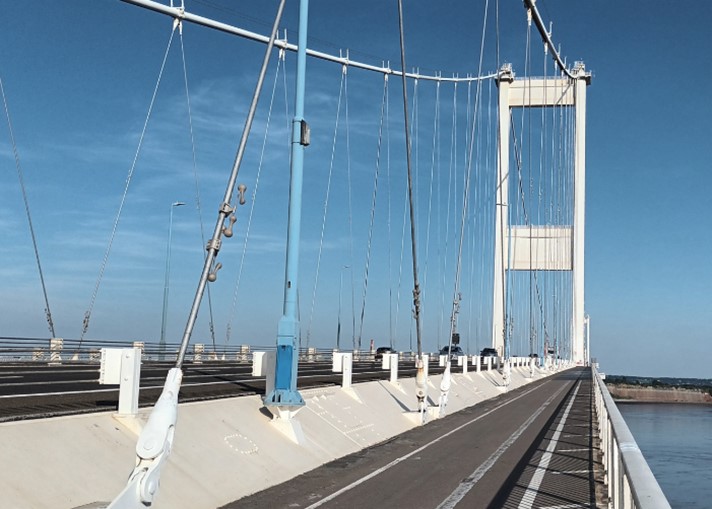
Heading towards the second tower on the Severn Bridge
An intense heatwave saw my original plans for a walk along the estuary between Sharpness and Aust with Environment Agency staff suddenly shelved. On a hot calm day – well, of course, the Severn Bridge (Pont Hafren) was the obvious place to be. So, with little preparation I set off to experience the estuary from yet another, bird’s eye perspective. This time I was accompanied by my husband, Geoff, who had grown up in Alveston, and who I thought might be able to provide some local detail, albeit he’d moved to Kent at the age of 10. Not entirely sure how long the walk would take or indeed exactly where to park to access the path across, we ventured out in the late afternoon sweltering heat which now, a few weeks’ later, it’s rather difficult to imagine!
The walk
Some Googling enroute led us to an uninspiring industrial estate on the edge of Chepstow where several bloggers suggested there was access by foot to the bridge. After a little exploration we eventually found signage associated with the Severn Bridge 5k Parkrun – phew, I thought, only 5 km! Passing under the M4 and admiring the wacky graffiti of the underpass, we located the path which surprisingly led up us through a delightfully calm and relatively cool woodland towards the bridge.
The sound of the roaring traffic rudely broke our peace as we ventured through a somewhat intimidating steel gateway onto the dusty path across the bridge. This was, of course, the Wye Bridge (Pont Gwy), which, at 408 m long and with its two towers, is quite impressive in its own right, though hardly noticeable when driving over ‘the’ bridge. Immediately, we realised this was not going to be an entirely pleasant experience, though: the thunderous vibrations from passing lorries alongside the near constant roar of other traffic were not only deafening, but meant that you had to be really careful not to step out from the narrow footpath onto the cycle/motor bike lane. Only the eastern, seaward footpath was open today due to maintenance work, so it was busy with other walkers, cyclists and even motor bikes. Much to our surprise we realised that the bridge is part of the Land’s End to John O’Groats long-distance cycle route! Well, if I was somewhat hot and sweaty crossing the bridge, others must be steaming, given the size of some of the panniers on their bikes.

Geoff posing in front of the graffiti in the Severn underpass
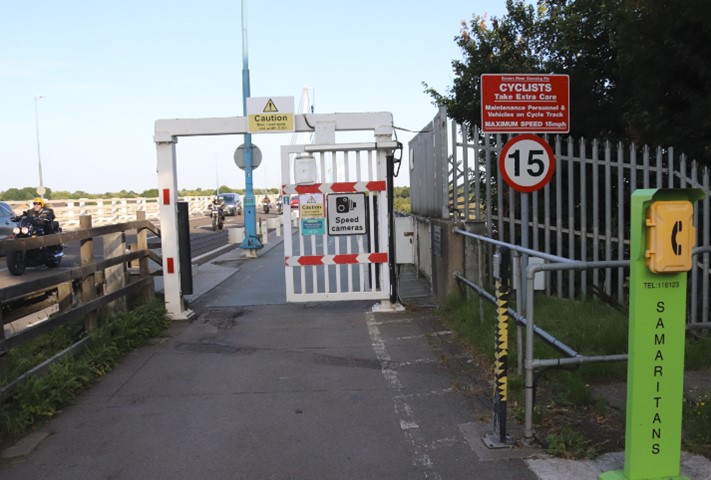
The slightly unwelcoming and intimidating entrance to the bridge walk!

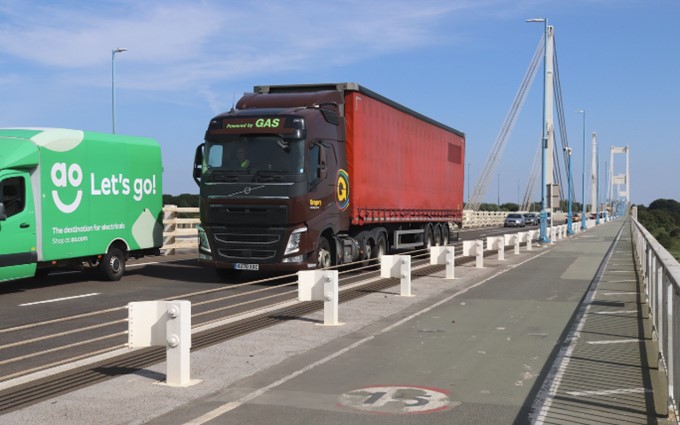
Thunderous traffic hurtling along the Wye Bridge (Pont Gwy)

Two of the many friendly cyclists crossing the bridge
Vistas and troubled waters
Eventually, I managed to block out the intruding noise to be able to admire the amazing vistas afforded by our elevated position along the bridge. Indeed, our bird’s eye views, alongside the ever-changing light and tides, made for a most memorable and, as the poet, Vikram Aarella, notes in their poem on the bridge, an ‘awesome’ experience. Not only were the hidden worlds of Beachley Barracks and the now infamous Tracey Island (St Twrogg’s Island, see my July blog) revealed, but the long shadows created by late afternoon sunshine enabled us to pick out all sorts of coastal features along and the near the shoreline –embankments forming vital coastal defences to miles of valuable agricultural land and the inter-city railway line, complex but beautiful vegetation patterns in the saltmarshes, as well as intricate tidal creeks, channels and gullies traversing the emerging intertidal mud flats for which our estuary is so renowned. Less well known are the ephemeral shapes of mythical beasts, crocodiles and other creatures which appear and disappear with the incoming and outgoing tides along the shore!
Once on the Severn Bridge proper, the distant panoramic views down the estuary were even more breathtaking, despite the slight haze. The wide expanse of the estuary’s waters is so impressive from mid-bridge, and the Prince of Wales in the distance looks so incredibly small. Capturing such views on camera on an ever moving, vibrating platform, was far from easy, however. Thankfully though, due to some careful planning (watching for breaks in the ‘heavy’ traffic and locating more stable, locations on the bridge, notably near the towers) and the use of exceptionally fast camera speeds, I eventually captured some half-decent photos to share with you. Unfortunately, you’d have to get up exceptionally early to do better and even writing a blog for SEP e-news is not worthy of that…
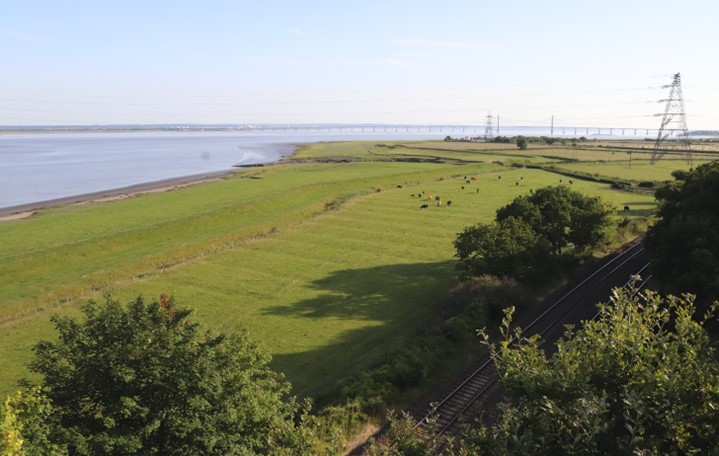
One of many vistas from the bridge – this one even reveals the ancient, medieval field patterns in the coastal plain.
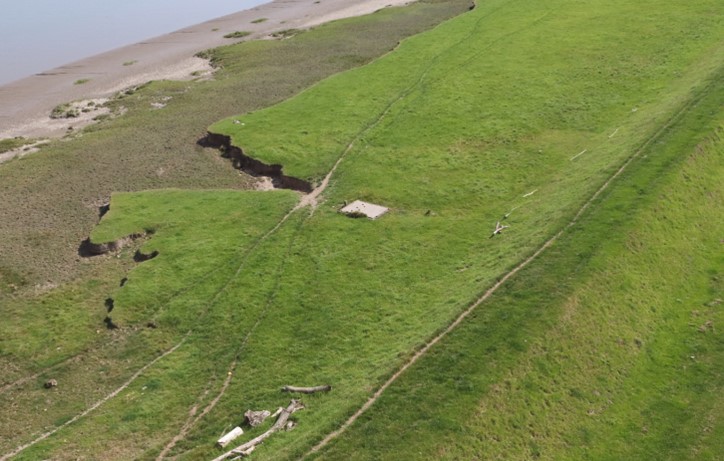
Embankments and multiple shorelines along the Welsh coast
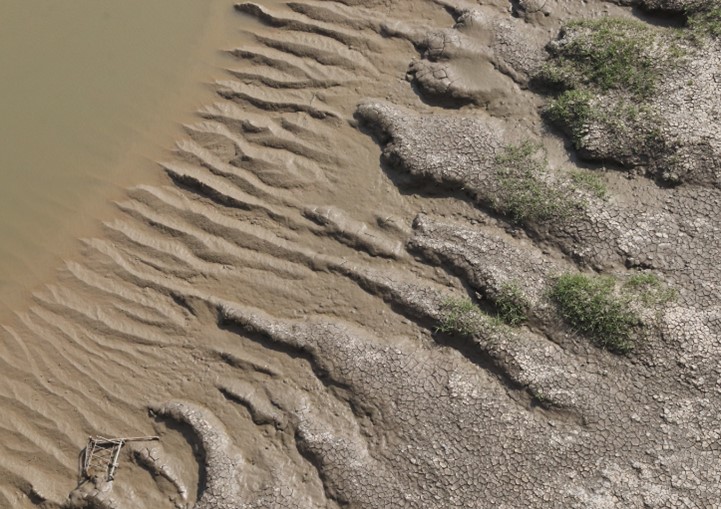
Mythical beasts along the muddy shores
As a trained physical geographer, the birds’ eye views of the swirling eddies in the tidal waters below us were amongst the most spectacular features of our walk. Richly coloured chocolate browns mix with grey blues and a multitude of other Severn Greys to create ever-changing eddies of all sizes and a visual art display like no other. Wow – I’d only been down there, traversing those waters a few weeks before on the Waverley. Even more crazy was the thought of the relatively small ferry crossing from Beachley to Aust which operated until the bridge opened in 1966. Given such potentially treacherous waters, no wonder Telford had considered building a bridge as far back as 1824! As we moved to the middle of the Severn Bridge itself, my thoughts turned to the amazing geology of the Aust cliffs and their similarity to the cliffs Heather and I had seen on my first e-news walk from Lavernock Point to Penarth. The alternating reds, browns, greens and greys of the Triassic rocks of the Aust SSSI are certainly a striking and welcoming feature as you approach the English coast and the 1960s old ‘Severn Service Station’ from which I caught my first-ever, memorable glimpse of the Estuary.
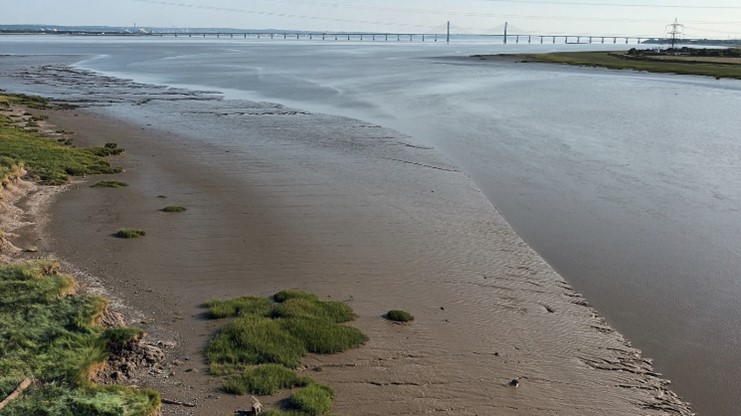
Distant views from the Prince of Wales bridge across the emerging mudflats
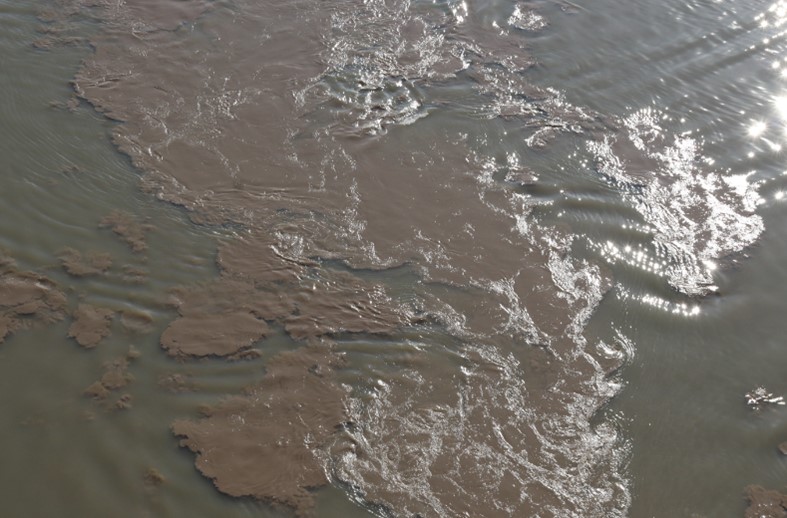
The chocolate turbid waters swirling below the bridge
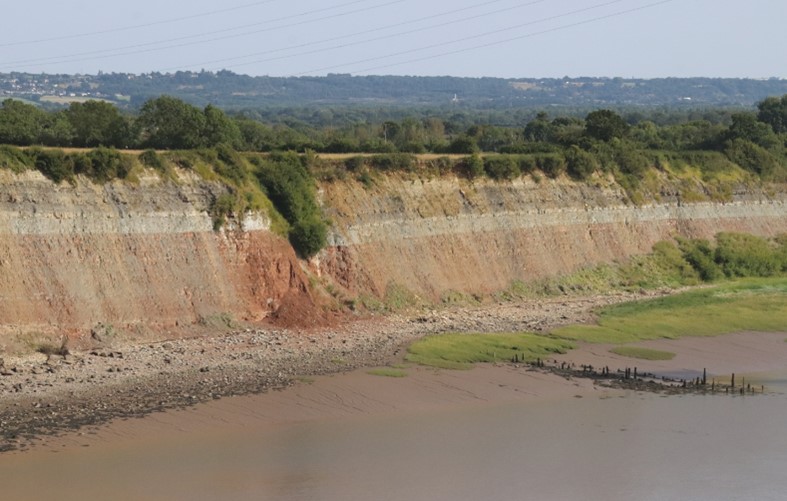
The dramatic Triassic cliffs at Aust
Having reached ‘the other side’ and aware of the dimming light and our much-reduced water supplies, we swiftly took our proof of passage photos (unfortunately, of dubious quality so not reproduced here!) before retracing our steps over the bridge, hopefully to take considerably less than the two hours it had taken to traverse the estuary on our outward walk. Despite our best efforts not to stop on our return, there was the inevitable photo opportunity to wonder at the newly emerged shorelines and even wider expanses of mudflat which had appeared since our outward walk, and also to study the ‘dog bones,’ best explained in the next section on bridge innovations!

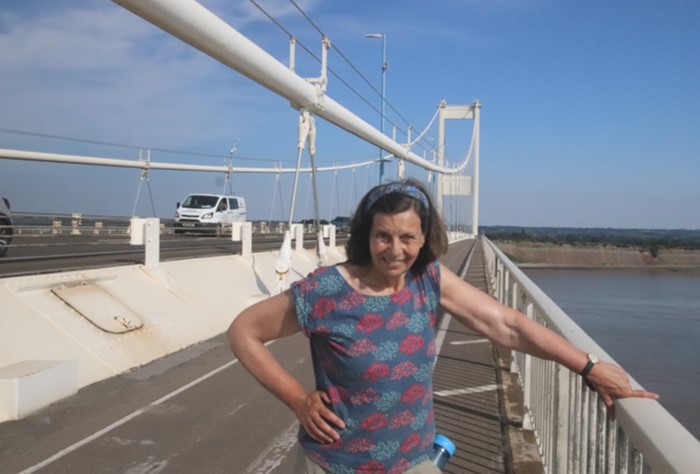
Self, unsuccessfully trying not to squint into the bright sunlight, near the centre of the bridge
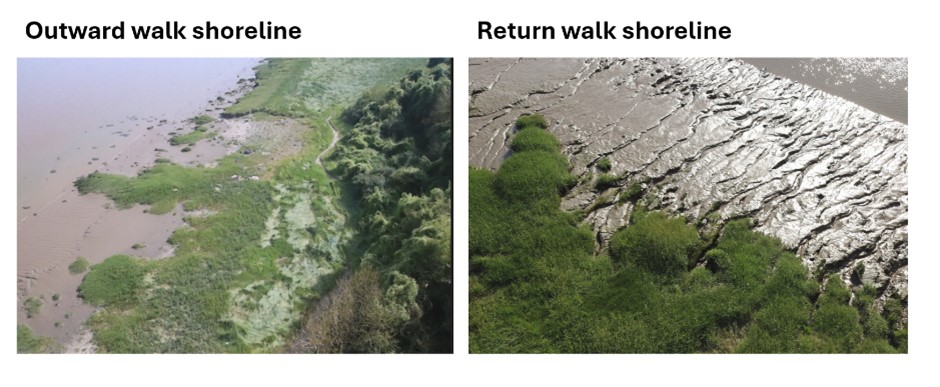
Differing shorelines on outward and return walks
The bridge – engineering innovations
Though constructed at a time of black and white television, and classic cars such as the Hillman Minx, Ford Cortina and Ford Escort, and completed in the year (1966) when the Monkees came to our TV screens and to some people’s walls (!), this is a bridge which leaves you impressed whether viewed from afar or on foot. The height of the towers, the lengths of the wire cabling and the gradient of the arching road/path, are all to be wondered at as you amble across the bridge – things you take for granted when travelling at speed by car. You also don’t really appreciate the huge efforts in engineering and construction which enabled such structures to be built and indeed to survive to this day, still supporting a major road artery nearly sixty years later. As we learnt from our scrutiny of the many plaques along the bridge, both the construction and refurbishment of the bridge, had come at some human cost, as lives had been lost during both phases.
I learnt later that this mighty bridge was many years in the design and development – perhaps a noteworthy point for other current proposed infrastructure projects in the Bristol Channel. Early engineering design proposals and associated wind behaviour studies in the 1940s and early 1950s, following local and national interest, were initiated and then abandoned by Government. However, these formed a useful context for later developments. This was never going to be a ‘plug and play’ bridge under the guidance of the eminent, chief engineer Gilbert Roberts. This notable individual had already completed pioneering work on high tensile structural steel and the use of welding instead of rivets for large steel structures (including ships) which had reduced the weight and subsequent costs of such structures. He had even been involved in the Forth Road Bridge which preceded the Severn by a few years. Dampening the Severn Bridge’s potential vibrations and oscillations, as well as keeping the weight of the bridge to a minimum in order to reduce costs, were key drivers in our bridge’s design. This resulted in several innovative features including the use of (cheaper) single cell box girders, a particular hanging of the wire-rope hangers and even shop fabrication of some sections, some of which were built by Fairfield-Maybey in Chepstow before being transported by river to the site. Such was the innovation involved in the Severn Bridge’s design that Roberts received multiple prestigious awards for his efforts, before being sought after to design bridges and other structures all around the world, including the famous bridge across the Bosphorus. However, there were some sceptics, including one eminent engineer who feared that the first fall of snow would see the Severn Bridge collapse! Fortunately, that never happened although there has been more than one occasion when the bridge has been closed due to high winds. The increasing volume of traffic crossing the bridge, however, was never envisaged during the 1960s. By the 1970s the bridge was reduced to single lane traffic prior to strengthening and restructuring in the late 1980s. Eventually, even this wasn’t enough to cope with the burgeoning demand, leading to the construction of the Second Severn Crossing (the Prince of Wales Bridge) in 1992.
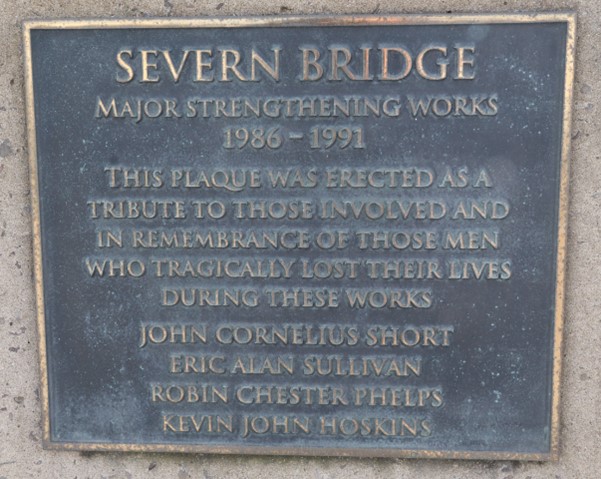
One of the plaques along the bridge, commemorating one of the bridge’s lesser-known tragedies
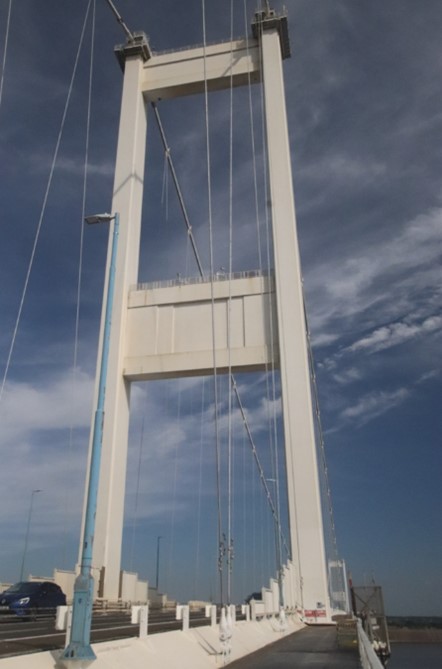
One of the mighty towers supporting the Severn Bridge
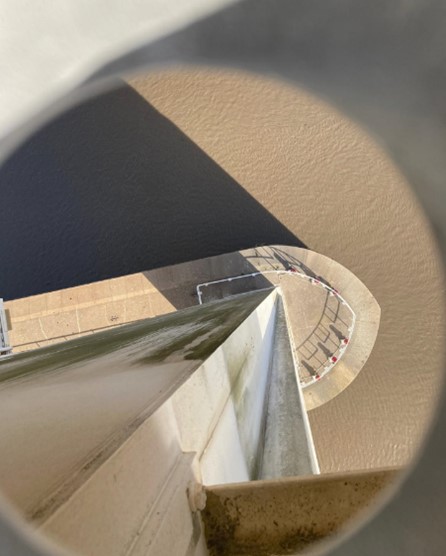
An impressive, if slightly scary view down to a bridge support (photo by Geoff Ballinger)
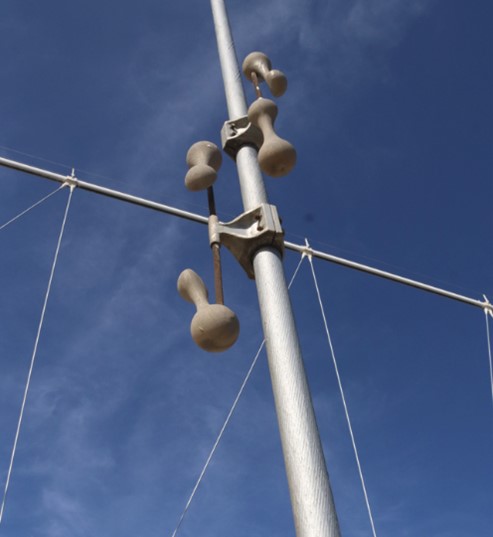
A dogbone, Stockbridge damper on a road support cable
Ode to the Severn Bridge
Two lands at last connected
Across the waters wide
And all the tolls collected
On the English side.
(Harri Webb)
Later engineering additions to the Severn Bridge were the somewhat mysterious dogbone structures attached to the road support cables, which we couldn’t help but notice as we plodded back towards Chepstow in the searing heat. These specialised Stockbridge dampers with their notable dumbbell shape help suppress wind-induced vibrations, reducing stress and fatigue in the cables. Designed by the Australian inventor and aviator, Philip Dulhunty, who also produced the world’s first battery-powered laptop computer, these dogbone dampers, apparently are a considerable improvement on the classic Stockbridge dampers devised in the 1920s. Minimising bridge oscillations has certainly attracted engineers’ attention ever since the dramatic collapse of the 1940 Tacoma Narrows Bridge (Galloping Gertie) into Puget Sound in Washington State. At least we weren’t subjected to any such wobbling, but then it was a very calm afternoon…
Key facts about the Severn Bridge (Pont Hafren)
- Bridge construction started: 1961
- Official opening of the bridge: 1966
- The World’s 43rd longest bridge span between towers!
- Designated as a Grade I structure in 1999
- Cost of initial building: £8 million
- Bridge constituent structures: Aust Viaduct, the Severn Bridge, the Beachley Viaduct, the Wye Bridge
The bridge – social engineering
As we approached the gates at the end of the Wye bridge and returned to the relative calm of the woodland we were able to chat (at last) and began to reminisce about our childhood memories. I remember the excitement of viewing the bridge and estuary from the old Severn Services enroute to a holiday in Cornwall. I recalled admiring the grace of the technological wonder as we drove over the bridge, albeit our excitement was slightly marred by the anxiety of finding the correct change for the toll booths on the Welsh side. Do take a look at Natalie Pithers’ wonderfully entertaining and vivid description of her childhood memories of crossing the bridge which echo some of my recollections and feelings.
Geoff fondly remembered his mother’s palpable excitement on attending the official opening of the Severn Bridge by HM Queen Elizabeth II. He also recalled crossing the bridge by car for the very first time – “a very small family car replete with odorous dog, Spike, and my parents’ friends, Frank and June, and their boisterous children. I also remember that visits to my uncle and aunt, who lived near Hay-on-Wye had used to involve a long car journey via Gloucester with the small treat of seeing an illuminated match as we passed the England’s Glory factory. Suddenly dad could drive via a more direct route over the bridge, bypassing Gloucester altogether – although he did have to do a lot of fumbling in pockets to find the toll charge. My childhood memory of approaching Wales was the sight of Beachley Army barracks and a large structure which I was convinced was part of an obstacle course recruits had to climb. Our recent walk revealed it was actually the camp chapel! As a child we sometimes took visitors to see and walk on the new engineering wonder. I have no memory of the noise of lorries – maybe lorries were quieter then!” Suddenly, afternoon excursions to South Wales for picnics were a fun and fashionable thing to do too. The coach loads of South Walians descending on Bristol for a day out were a talking point for the local Bristolians, particularly given the new visitors’ somewhat unfamiliar accents. Such was the excitement and interest in this new structure, that poems were even written about it. The one reproduced (left) is probably the best-known, though it was rather contentious at the time. From what I remember, it reflected negative feelings towards the bridge tolls and associated comments about ‘paying to enter Wales.’
We reflected on how the bridge must have changed the social and economic geography of the region more widely. As the US politician, Elijah Cummings has suggested bridges ‘determine the connnections … that people will encounter in their daily lives’ – we saw this in the local, foot traffic on the bridge as we passed a few people on our return walk we’d seen previously who appeared to be carrying their shopping – quite a long walk to go to your local, I thought! Cycling was always a ‘thing’ and Geoff recalled the time two childhood friends set out to cycle from Alveston to Chepstow, and back. “They did it, on small bikes and probably no gears, but nobody’d quite anticipated that the ride home would be in a police car, as they got stuck on the other side”.
Queen Elizabeth II had remarked on the potential for the bridge to change the economic prosperity of South Wales in her speech at the official opening in 1966. Inspired by the new connectivity associated with the bridge, a new vision for regional development was put forward in the 1971 study prepared for the Department of the Environment and Welsh Office ‘Severnside: a feasibility study.’ Despite the increasing prosperity of Cardiff, sadly any hopes for significant increases in economic growth in South East Wales weren’t realised. However, now, many decades later, and also following the construction of the Prince of Wales Bridge and the abandoning of road tolls, the Western Gateway partnership is beginning to redefine the region and propose ambitious forward-looking plans for Severnside and beyond.

Massed bands at the official opening of the bridge by HM Queen Elizabeth II – one of many family photos of the occasion taken by the late Leslie Ballinger
Final thoughts
Reflecting on my short excursion across the mighty Severn Bridge/Pont Hafren, I’m reminded of the comment made by the US film-maker Bruce Jackson who suggested ‘‘Bridges become frames for looking at the world around us.’ Whilst I must have used the SEP logo with its stylised bridges on innumerable occasions, I hadn’t really thought too much about the bridge’s impact on the estuary and its people, until I’d completed this walk. Rambling across this mighty structure, I’d been granted a new perspective of the estuary itself – new vistas had emerged and hidden worlds had been revealed. The walk had also motivated me to research the bridge and its environs further, leading me to explore a number of current on-the-ground issues, which, as SEP Chair, I should be aware of. Of these, the future of the old Beachley Barracks site, following the MOD site closure in 2029, is now on my radar …
So, I’d encourage you to take a walk across the Severn and see what new perspectives and inspirations you gain from this fun, though somewhat noisy experience.
Further Reading
Gilbert Roberts. 18 February 1899 – January 1978, by OA Kerensky, Biographical memoirs of fellows of the Royal Society, Vol 25 (Nov 1979), 477 – 503, http://www.jstor.org/stable/769856,
A trip to the past – via Chepstow, by Natalie Pithers of Genealogy Stories
The Severn Bridge – History Points – https://historypoints.org/index.php?page=the-severn-bridge
The First Severn Bridge – by Phil Carradice – https://www.bbc.co.uk/blogs/waleshistory/2011/09/the_first_severn_bridge.html
Useful websites on walking the bridge
GPS Cycling and Walking Routes – Severn Bridge Walk Route – https://www.gps-routes.co.uk/routes/home.nsf/RoutesLinksWalks/severn-bridge-walking-route#google_vignette
Useful info on walking the bridge – https://www.tripadvisor.co.uk/ShowUserReviews-g190753-d12428909-r679581623-Severn_Bridge-Chepstow_Monmouthshire_South_Wales_Wales.html
Saturday Walkers Club – Severn Bridge Walk – https://www.walkingclub.org.uk/short-walk/severn-bridge/

Pier to pier aboard PS Waverley
Written by Dr Rhoda Ballinger, SEP Chair
A voyage of discovery on the Estuary involving bridges, mountains of chips and even Tracey Island!
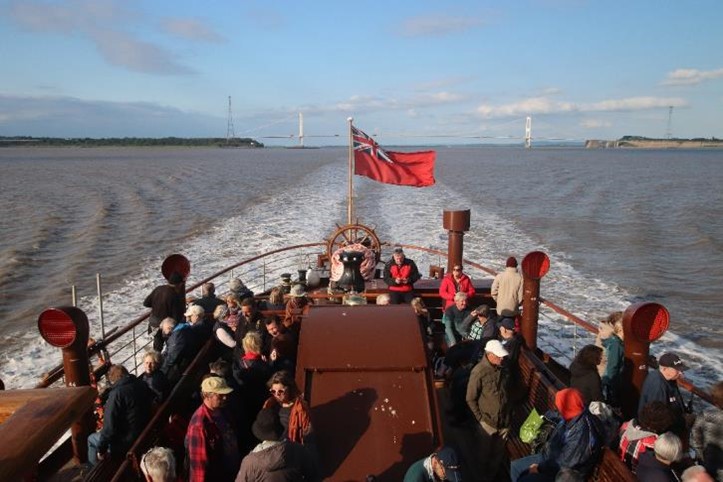
What better way to explore the estuary, but aboard the famous paddle-steamer PS Waverley for a rare chance to cruise under the bridges. Join me and my travel companion, visual artist Heather Green, on our half-day cruise to discover more about this wonderful vessel, the last ocean-going paddle steamer in the world, and to learn about some of the delights of sailing in this dynamic, tidally dominated environment.
The PS Waverley – the star of the show?
Sleek and graceful, the recently refurbished PS Waverley glid across the grey sea towards Penarth Pier, watched and photographed by an almost silent, expectant crowd of onlookers. Clearly, the long-standing tradition and popularity of leisure paddle steamers in the Bristol Channel is still alive! Despite being dwarfed by the pier, the Waverley herself promised to be the star of the cruise with her handsome red funnels, well-polished decks and nostalgic charm. There were few thoughts of the possible fragility of such an old vessel, reliant on, what I later discovered, was eighteen century technology – the first ever paddle steamer appears to have been built in France to sail the Doubs.
Once settled onboard, I took an obligatory visit to the recently restored engine to admire this gleaming, mighty piece of engineering on which we would depend to carry us safely and swiftly through the potentially treacherous waters of the upper estuary. Standing among a throng of awe-struck onlookers, we all watched intently as the pistons moved back and forth, providing a reassuring and regular clunking accompaniment, seemingly from a by-gone age. Although the paddles themselves are now largely obscured, their flickering shadows were just visible through misted-up glass windowpanes.
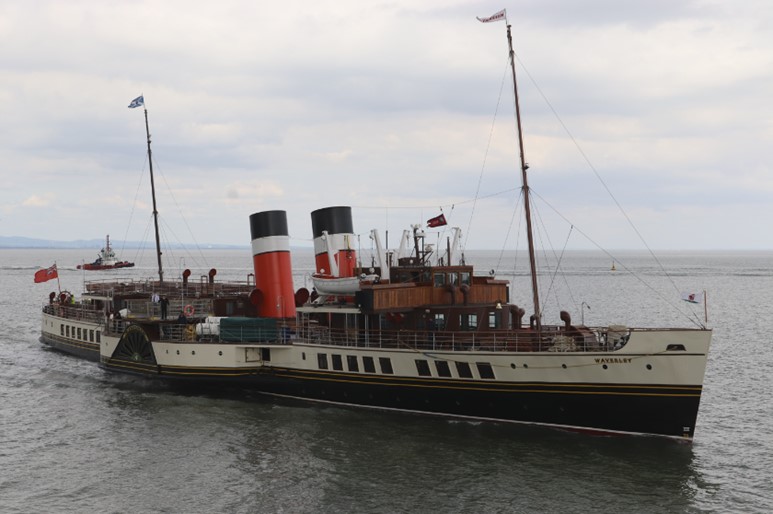
PS Waverley approaching Penarth
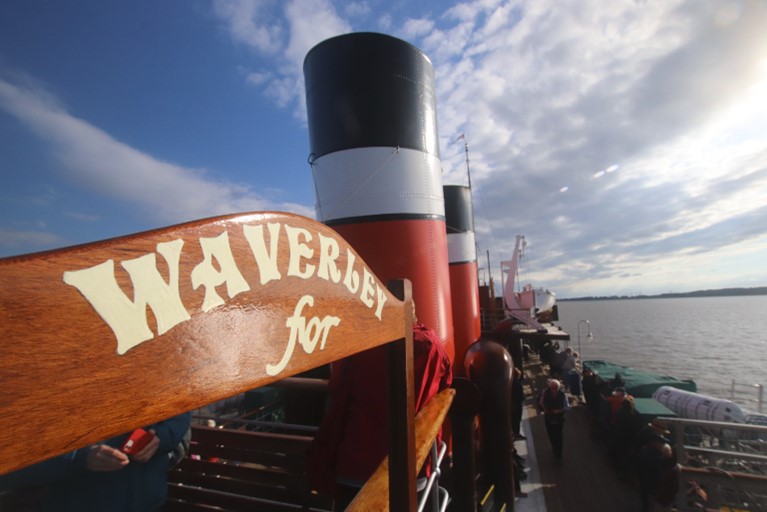
A glimpse of the maritime charm of PS Waverley
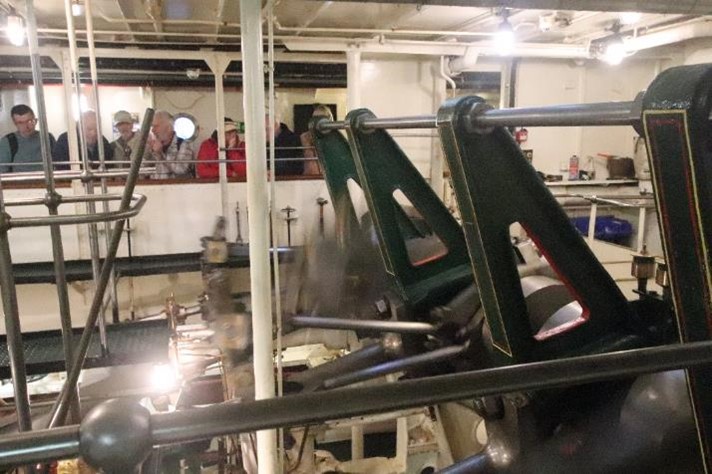
Waverley’s engine being admired by keen onlookers
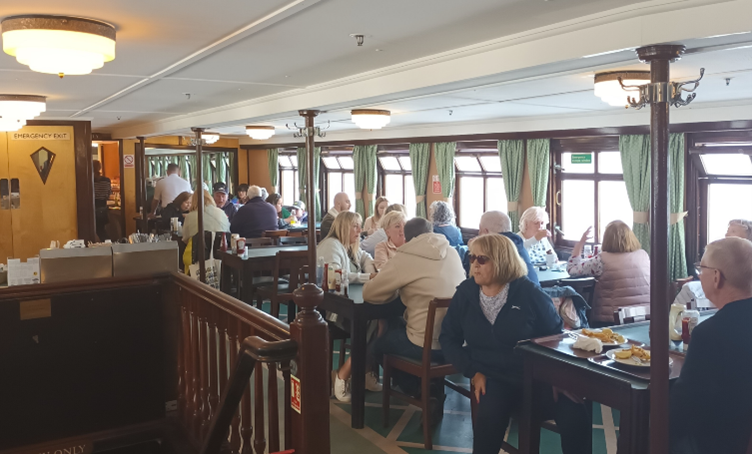
The elegant dining saloon
KEY FACTS ABOUT PS WAVERLEY: Built in 1946 by Inglis in Glasgow, it is now the last seagoing paddle steamer in the world, listed within the UK National Historic Fleet as “a vessel of pre-eminent national importance”. It is powered by a three-crank diagonal triple-expansion marine steam engine. The Waverley underwent a major £7m rebuild in 2000 and 2003. For technical details from the Paddle Steamer Preservation Society, click here.
Despite our excellent viewing position on the aft of the observation deck, we eventually ended up, along with what seemed to be nearly everyone else onboard, in the restaurant, not only to warm up and to partake of traditional refreshments (yes, chips were involved), but also to rediscover the nostalgic charm of this art deco dining saloon with its fine wood panelling and elegant ceiling-mounted glass lights. We were also delighted by the different aspect afforded by the low perspective of the wide saloon windows as we waited reasonably patiently for our evening meal. The charms of the wood panelling did, however, being to fade as we waited SO long, trying not to stare at the mountains of chips being devoured by fellow passengers.

The offshore perspective
As I’m sure you’ll have experienced – one of the fascinations of a cruise is to see your surrounds from a different angle. Earlier in the day, as we swept out into the Channel, swiftly leaving the pier behind, the scale, openness and expanse of the offshore quickly began to dominate – new geographies of the islands and coast constantly emerged as the resorts and cities which hug the shores receded into the distance. Would we glimpse the ‘dark side of Steep Holme?’ anxiously asked one passenger – well, no, but we would be treated to lots of photographic opportunities and the full range of Severn Shades of grey, green, blue and brown, worthy of a Farrow and Ball or Little Greene colour card, certainly not just the ‘grey-brown’ offered by Peter Finch in his recent book ‘Edging the Estuary’.
A running commentary pointed out key historical landmarks and other attractions along the way. We learnt lots of new facts about the former and current uses of the coast. Did you know that there was a nautical college at Portishead, the National Nautical School which, had been created for ‘destitute, neglected and often delinquent boys from Bristol, but which now, like many other imposing buildings with a sea view, has been converted to residential apartments? Are you aware that there is a tanker storage facility on the coast close to Portishead which supplies Gatwick with aviation fuel?! Have a look at these online photos to see the scale of this impressive site which was constructed as a Government Civil Reserve in the mid-1950s by ESSO. I’m sure many of you who have driven along the M5 will be aware that Bristol Port has hectares of vehicle storage but you may be less aware of the large number of giant onshore wind turbines along the waterfront here. Certainly, the marine perspective offers new glimpses into our estuary’s frequently hidden shores.
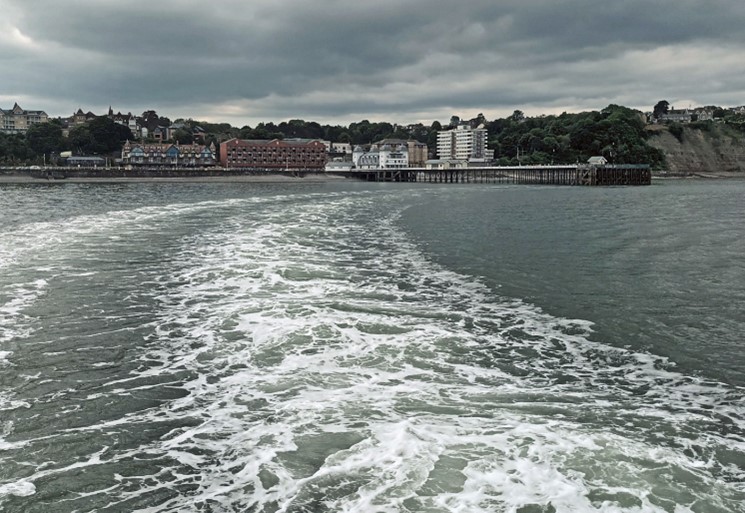
Penarth receding into the distance behind the ship’s wake
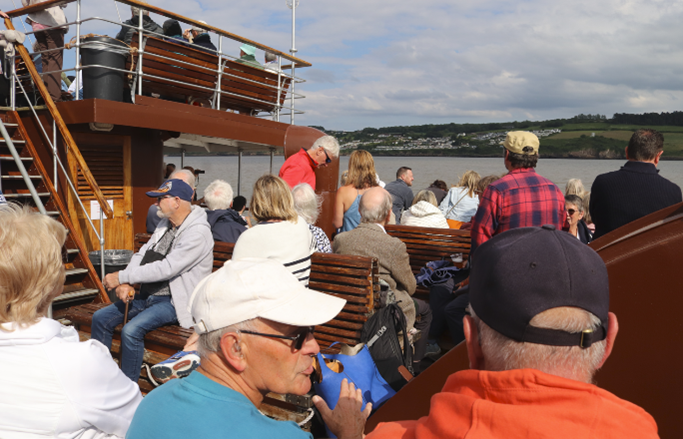
Passengers on deck sampling the delights of a Waverley cruise
Interesting as the commentary was, neither this, nor indeed, the curious offshore views, managed to entertain certain of the few younger passengers onboard. There was a plaintiff ‘are we nearly there yet?’ query from a very small traveller nearby, merely five minutes after embarking. Enterprising parents quickly devised a game of eye-spy buoy bingo and we were well entertained listening to many excited exclamations, as buoys of various shapes, sizes and colours were spied. However, as the game progressed, we were very much aware of the youngsters’ and parent’s confusion as the parent attempted to respond to the question, ‘if that’s a ‘boy’ then where are ‘men?’ May be an opportunity for future educational cruises and commentaries? There may also be a possible role for SEP to supply further information on the natural environment for future cruises? All good stuff in the commentary, but sadly no information about the natural environment, nor in any of the many available purchases in the ship’s tiny onboard shop.
Engineering connections – bridges and piers
If the intensity of the clicking of mobile phones and SLR cameras was an indicator of passenger interest, then the piers and bridges were certainly the main acts. No surprise perhaps given both Penarth and Clevedon piers are rightly celebrated and have been so over much of the last century: indeed, the poet Sir John Betjeman considered Clevedon Pier ‘the most beautiful in England’ and more recently, in a 2024 National Trust survey, Penarth Pier was voted ‘the most special place in Wales’. Even on a somewhat grey dull day, the elegance of the art deco ironwork on Penarth Pier and the Japanese-style pagoda at the Pierhead on Clevedon Pier, was immediately apparent. However, the sheer size, design and strength of the ‘undercarriage’ of both piers was their most impressive feature, as we peered up at them from the deck of the Waverley. Even more amazing was thinking about the perilous construction of these structures in the first place, in such an inhospitable environment and with relatively simple technology – I learnt afterwards that, not surprisingly, the first attempt to build Clevedon Pier, as early as 1837, had been thwarted by rough seas, causing the structure to collapse. As we watched the volunteers supporting passengers onto the vessel at Clevedon and Portishead, I was also reminded of the immensely impressive community endeavours associated with these structures. Over many, many decades, local communities have come together to fight and raise money for the restoration and maintenance of these notable landmarks, frequently and seemingly sometimes against the odds, in the aftermath of various storms, natural and economic. What was evident on our short trip was that this community spirit continues. Even onboard, as passengers from all embarkation points mingled and shared their experiences in a fascinating range of regional accents, new connections were visibly and audibly being fostered across the Estuary.
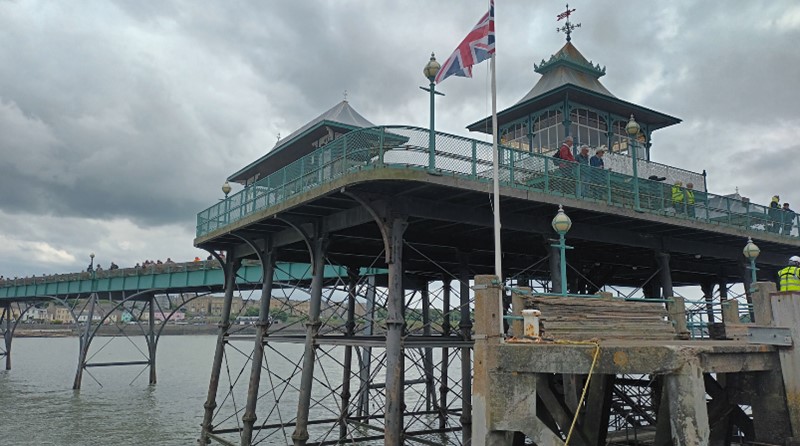
Clevedon Pier from the deck of PS Waverley

KEY FACTS ABOUT CLEVEDON PIER: 310m long and with 4.3m clearance at high water. The pier opened on Easter Monday, 29th March 1869. It helped provide a new, fast route to S Wales until the Severn Railway Bridge Tunnel opened in 1886. The pagoda and shelters were added in 1894, fashioned on Nash’s Brighton Pavilion. 1970 saw the dramatic collapse of part of the pier. ‘Vocal local support, heritage engineering expertise and lottery funding‘ enabled the Pier to be voted ‘Pier of the Year’ in 1999! The pier has Grade 1 listed status.
KEY FACTS ABOUT PENARTH PIER: At just 200m long, the pier allows shipping access into Cardiff Docks. It was opened to the public in February 1895. The art-deco style pavilion on the landward side was opened on 18 May 1929. An original wooden pavilion on the seaward end was destroyed by a fire in 1931. The pier was closed for repair work for two years after a ship crashed into it in a gale in 1947. Following some difficult years, various restoration programmes resulted in the Pier voted ‘Pier of the Year’ in 2014! The Pier has Grade 2 listed status.
Even though most of us must have crossed both Severn bridges innumerable times before, to sail under them offers a new perspective on the old and familiar, and in this respect the cruise certainly didn’t disappoint. Indeed, as we sailed under these massive structures and their mighty supports were revealed, the onboard excitement was palpable. Surprisingly, there was no audible cheer – only the ship’s horn broke the relative silence on deck as we finally emerged upstream of the old Severn Bridge. There was then a flurry of activity onboard as people pointed SLRs and mobiles toward the bridges to capture that precious moment, and to take the inevitable selfie. Whilst neither bridge may not be as long or as high as other notable bridges in the UK, these elegant structures are integral to our estuary’s identity and, as such, should be celebrated. Indeed, the Severn Bridge still is the central feature of our own, Severn Estuary Partnership’s logo.
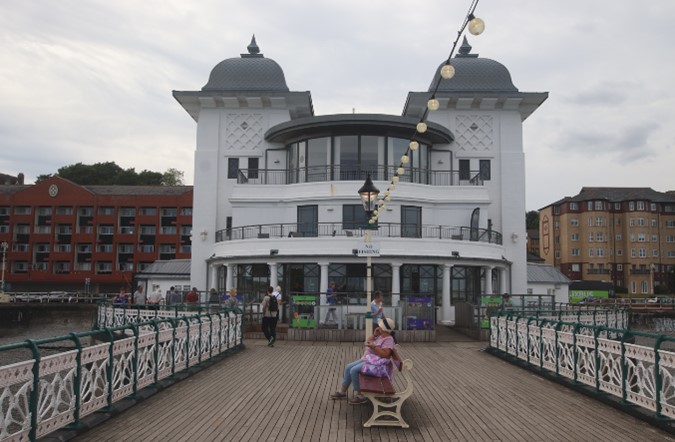
The ‘new’ pavilion on Penarth Pier
The bridges not only provide vital connections for modern day society but are also significant feats of engineering, particularly given the underlying geology and tidal currents in the intervening stretch of water. I can remember coming back from SEP meetings and crossing the ‘old’ Severn Bridge back in the 90s, and wondering at the seemingly slow placement of pillar supports for the ‘new crossing’ – would they ever get to the other side? It took four years, but I can vouch from my brief inspection of the underneath of the bridge, that it’s a very solid piece of engineering and does span the entire estuary! Apparently too, this bridge has been built to withstand an earthquake or, indeed, a ship collision – the tragic fate of the railway bridge over the Severn at Sharpness. More about all these bridges in subsequent postings!
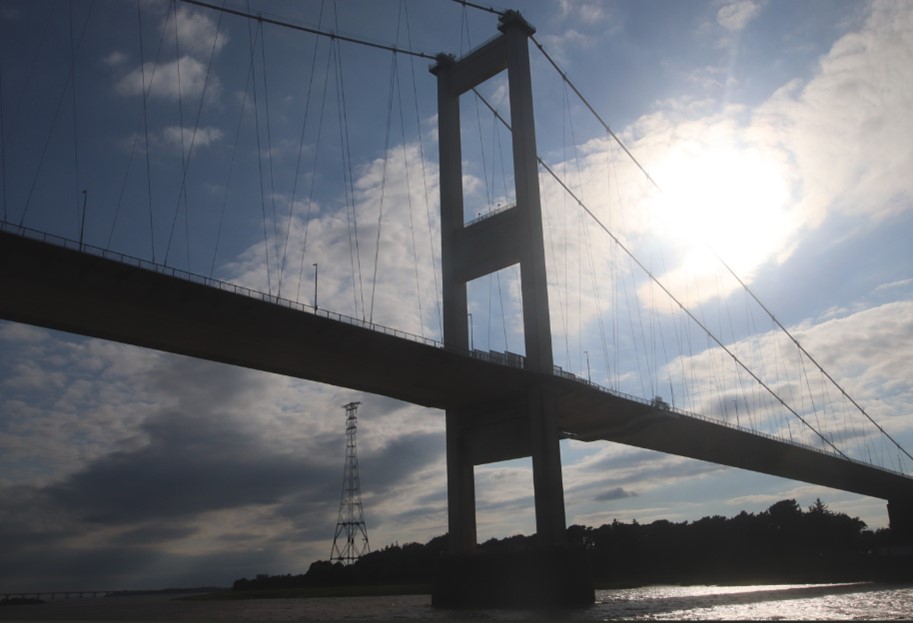
A Severn Bridge pillar from below
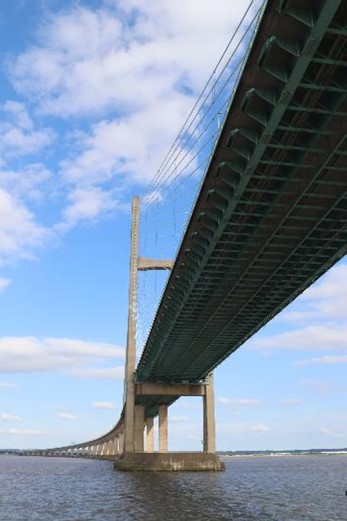
A novel perspective – the Prince of Wales Bridge from below

Surprisingly, a few passengers were almost more impressed with other nearby attractions than the bridges themselves. The Old Ferry Slipway at Beachley drew quite a crowd of onlookers, but it was the ‘That’s it – Tracey Island!’ exclamation from a nearby passenger which was most unexpected. Seemingly, Chapel Rock resembles the famous Thunderbirds’ island and has been a landmark and useful distraction for some young families for many years! Researching the island, it’s actually quite a significant feature in its own right, although from the deck of the Waverley it didn’t really look much. The island, which has had no fewer than four names, apparently, attracted pilgrims and saints from far afield, or, should I say, afloat, back in the day. More about these Celtic connections in future walks, I think.
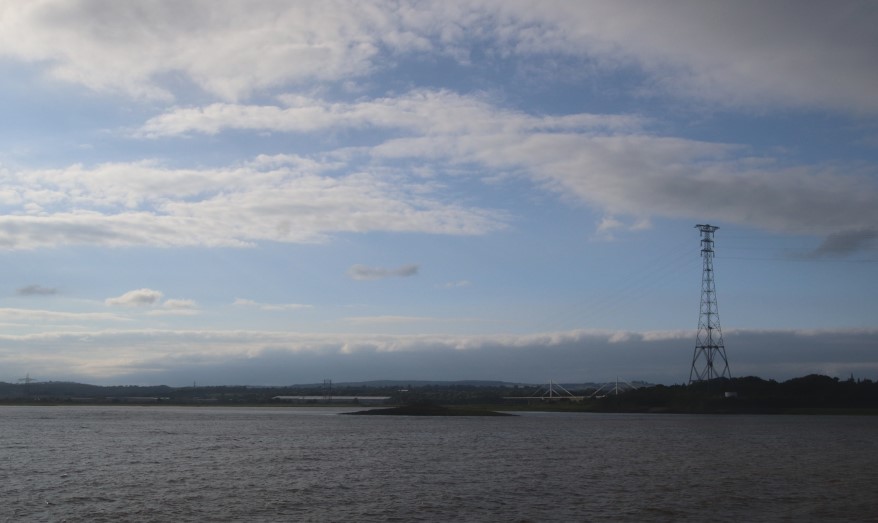
A rare sighting of Tracey Island from offshore!
Tidal waters run deep (just deep enough)
The perils of navigating the tidal currents and the constantly varying water depths of the estuary were obvious from the start of our voyage. When we were ushered quickly onboard at Penarth, it was that ‘time and tide’ were certainly not going to wait for anyone, not even the most iconic of historic ships, even one which has a relatively flat hull and a draft of only 1.9 metres.
There were also frequent references to the ever-changing tidal state of the estuary in the commentary too, particularly as we approached the upper estuary and sailed between and under the bridges. Taking onboard pilots to help our safe passage, we wound our way in what at first appeared to be a most bizarre route, to follow the deeper tidal channels between and under the bridges. I briefly reflected about the geomorphological history of the Severn and wondered at the origins of these ancient river channels, as well as the human endeavours to chart these precarious waters.
There were further reminders of tides later on in our cruise. As we disembarked at Penarth there was a somewhat anxious and then forceful request for the remaining passengers going on to Clevedon to move to starboard. This was the point where I hoped the earlier intake of chips by some of the passengers would pay dividends! The ship then very gently tilted over slightly, enabling us to climb the now steep gangway. Would we all make it? Assistance was indeed required for some of the more elderly clientele, but fortunately this time, at least, we all did alight onto the pier! Hopefully, all the remaining passengers also caught the tide at Clevedon later in the evening. This all reminded me of a couple of previous Severn Estuary cruises. There was the cruise which followed a previous Severn Estuary Forum when packed lunches were almost thrown at forum delegates as they were ushered with great haste out of the Penarth Paget Rooms and down to the pier to alight the MV Balmoral. There was also a slightly less happy memory – being stranded for many hours offshore and sampling much of the ship restaurant’s menu as we waited for the tide to oblige and let us disembark at Penarth!
Conclusions and further thoughts
So, overall, despite the final somewhat undignified climb, a great day out in the Estuary! We might not have seen the dramatic cliffs of the North Devon coast or, indeed, the wildlife around Lundy, but it was a memorable, even if rather chilly experience. I’m already looking forward to the 2025 cruise season, hoping that SEP might be able to team up with the Waverley to input some more information about the natural wonders of the Estuary into their cruises and associated paraphernalia, particularly given some passengers’ comments about the need to go to Cornwall to see any marine life. Looking to future seasons, there’s also the possibility that the much-loved and most widely travelled excursion ship, MS Balmoral may join the Waverley if further funding for restoration allows. Beyond that, the ongoing refurbishment of 1867 Birnbeck Pier to future public use may, hopefully, eventually inspire further restoration of this listed structure to provide a new ‘port of call’ for cruises. Whilst we’re not likely to get back to the heyday of steam paddlers on the Bristol Channel, when supposedly over 15,000 people per day disembarked at Birnbeck, if the comments of our fellow passengers were to believed, there’s definitely an appetite for recapturing the nostalgia associated with the historic steam paddlers of the Bristol Channel. For me in the short-term, however, this short cruise has been a useful window on the Estuary and a reminder of all the stretches of shore still to be explored in my future walks!
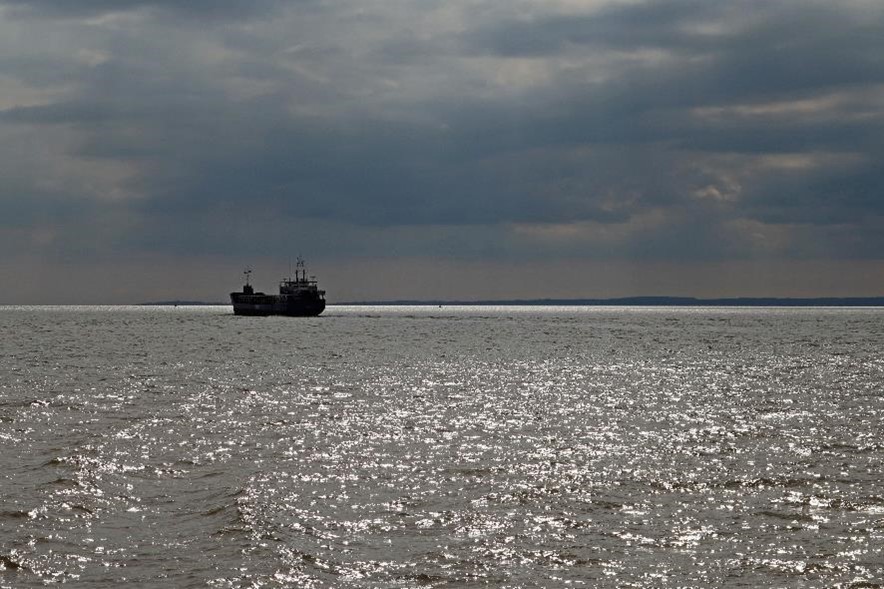
A shipping navigating the tidal waters of the Estuary

Self, onboard the Waverley

Do you have memories of cruising on the Bristol Channel? Let us know if you have memories you’d like to share.
More to explore
Paddle Steamers in the Bristol Channel
The Piers

Oh, I do like to be beside the seaside – Barry delights
Written by Dr Rhoda Ballinger, SEP Chair
An opportunity to introduce our visiting visual artist, Heather, to an old friend from Barry, resulted in my May Walk becoming a pleasant stroll from Barry Island to Porthkerry along the Vale of Glamorgan coastline. Although this was a rather familiar, relatively local stretch of coast for me, sharing the experience with Heather and researching the walk afterwards revealed many fascinating aspects of this coast – it’s certainly much more than just the home of Gavin and Stacey! I hope you’ll agree!
Barry Island beach nostalgia
As the two-carriage train clanked its way slowly into the station at Barry Island on a grey, overcast Thursday in late spring, it was hard to imagine the bustling excitement of families armed with bucket and spades and other beach paraphernalia on sunny summer weekend trains. Walking through the deserted and somewhat tired-looking Fun Fair to the seafront, even the brightly coloured dinosaur didn’t instil too much of the Barrybados vibe which has attracted generations of South Walians to this iconic location.
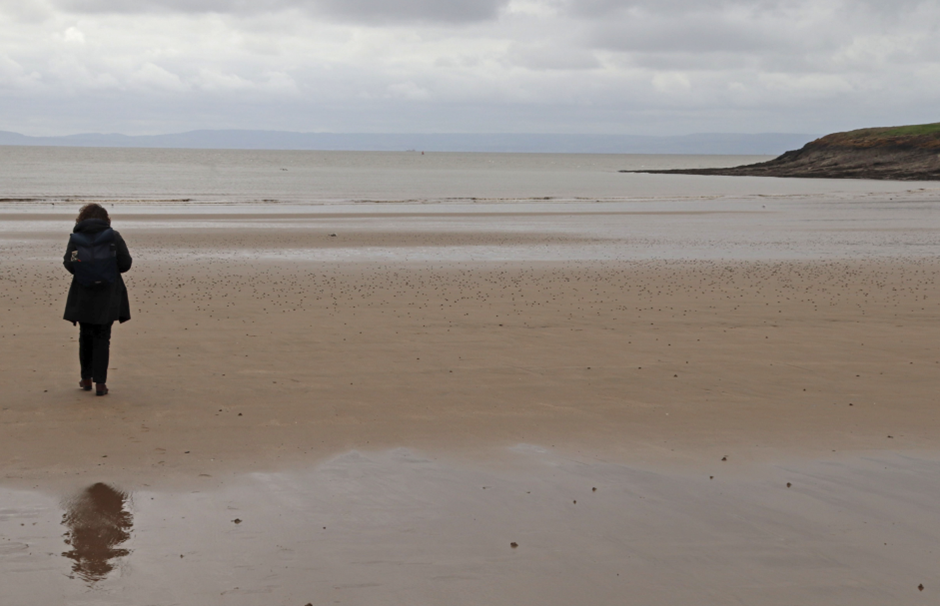
Whitmore Bay looking towards the N Devon coast
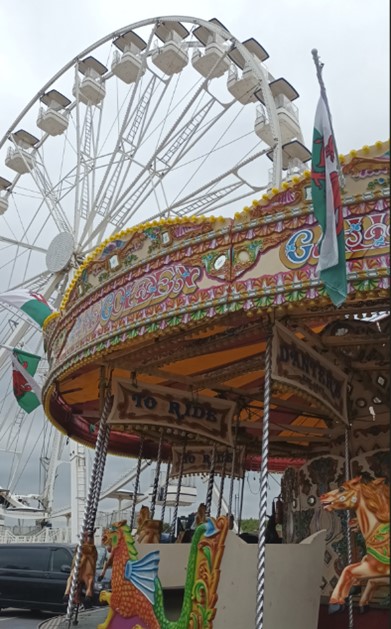
Barry Island amusement park
Meeting with Heather in one of the many seafront cafes for brunch, there was a little more buzz; however, it still was quite a challenge to explain the significance of Barry Island to my guest. Heather looked slightly bemused as I outlined the history of the famous Majestic/Butlins Holiday Camp which had over many decades provided a unforgettable, unique holiday experience for hundreds of thousands of those ‘of modest means’ and which, along with other similar camps elsewhere along the British coast, had created a public nostalgia which had inspired the popular TV sitcom Hi-de-Hi. Now the site of a Bovis Homes housing development on Nell’s Point, I was struggling to recall my memories of thirty years ago, when the derelict holiday camp with its rows and rows of white, flat-roofed chalets which dominated the Whitmore Bay seascape.
With a slight break in the clouds and a falling tide, we ventured onto the wide expanse of sandy beach which understandably remains such an attraction at weekends. The view across the Inner Bristol Channel to the Somerset and North Devon coasts always inspires and the gentle, relaxing sound of the sea lapping at the water’s edge is such a welcome break from the hustle and bustle of the promenade. However, frequent tannoy announcements periodically break the peace to remind you that this is an urban beach which must kept clean and tidy. The frequent instructions to dispose of your litter responsibly, alongside daily cleaning by local groups, does seem to be working, although the recent erroneous closure of the beach here due a malfunctioning water quality monitoring system has probably not instilled much public confidence (BBC news article). Unfortunately, the slightly brownish, turbid waters of the Estuary, are also frequently incorrectly interpreted by visitors as being dirty – clearly there’s lots of work for SEP and partners to do to try to educate the public on such matters!

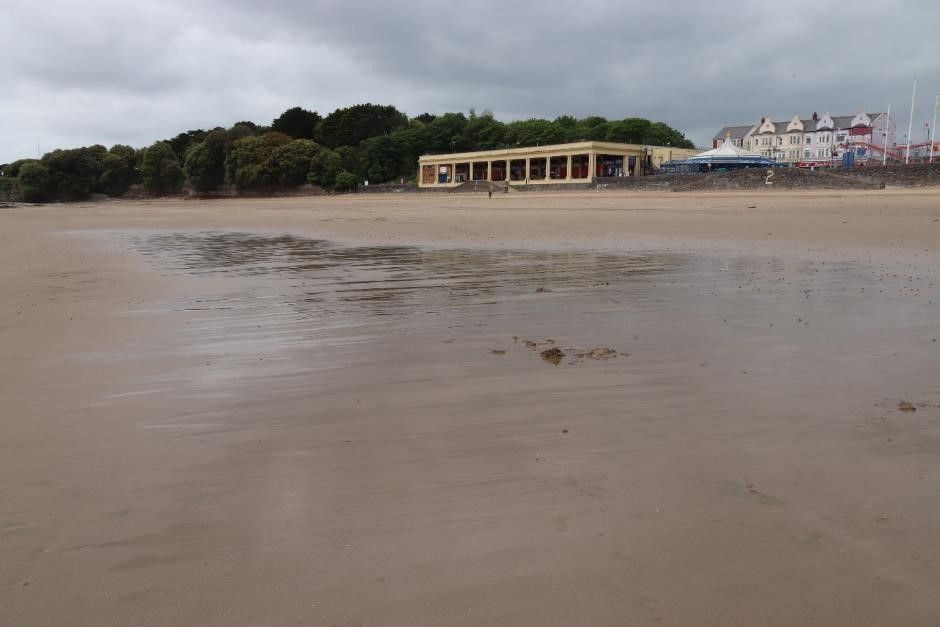
Whitmore Bay looking towards the promenade
Friar’s Point geological wonders
Given that most of my previous visits to Barry Island have been instructing scores of Marine and Environmental Geography university students over many decades and in many weathers into the coastal management of this coast, it was almost inevitable that we had to take a slight detour onto the rocky shore of Friar’s Point to point out the Barry Island unconformity and then go on to study the crinoidal limestones on the Point itself.
Although much of the Barry Island unconformity was largely obscured by brown seaweed, the contrasting angles of the rock layers at the top and bottom of the low-lying cliff were visible even to a non-specialist. As I explained to Heather, the underlying rocks (which are pointing towards the left in the photo) are ancient Carboniferous limestones which were laid down about 335 million years ago in warm tropical shallow seas, a bit like those off the east coast of Australia today (imagine Barry Island on the Great Barrier Reef!) The series of rocks lying on top however were deposited much, much later (around 200 million years ago in the Triassic) on land, many as screes and river sediments emanating from sudden flash floods which sporadically engulfed the desert-like environment of the shores of the large salty lake around which dinosaurs roamed. Geologists love this site because the unconformity, which represents a significant gap in time, is a bit of an enigma and is particularly well displayed at this site. What happened during the missing millions of years? Geologists have looked at all sorts of clues in the rocks here to try to understand this. If you’re interested check out this website to find out what they think happened. I’m particularly also intrigued by such unconformities as they were the inspiration for James Hutton, the Father of Modern Geology, in establishing key principles of geological science.
On the very tip at Friar’s Point, it was easier to demonstrate the geological interest, as the white minerals of fossils were now gleaming in the early afternoon sunshine. As the photo shows, the Carboniferous limestones teem with fossils, evidence of ancient marine life. Most obvious fossils are crinoids, marine animals which, with appendages which open up like a flower on a stalk, confusingly resemble plants more than animals, hence their common name, sea lily. These ancient, distant relatives of sea urchins and starfish, proliferated in the shallow waters of the time, not unsimilar to those where their living ancestors reside today in seas of the Gulf of Mexico and off Indonesia. Despite some rummaging around, our best finds of the day were broken fragments of the fossils, looking more like sticks of rock and polo mints than beautiful sea lilies.

Fossil crinoids (left) and the angular unconformity (right)
Shore treats – Old Harbour to Watch House Bay
If you want to avoid the longer route hugging the main road to Cold Knap, crossing the wide expanse of sand at low water between Friar’s Point and The Knap is preferable, although you do have to negotiate a small stream which meanders haphazardly across the beach and creates quite a challenge for those ill-prepared for such an obstacle. Not only is the route much quicker, but it also incorporates many features of interest – even more than we’d anticipated, as you’re about to find out.
Given Heather’s interest in tides of the Severn, we made a slight detour on the beach to study the muddier backshore behind the Old Harbour. Notwithstanding the decayed remains of a stranded and abandoned boat and an obligatory beach traffic cone, the backshore is remarkably natural, given its location. A saltmarsh sequence has developed here which sports a variety of hardy, adaptable plants which can tolerate the harsh conditions of the intertidal zone. At the edge of the mud, we carefully stooped down to study some salicornia (samphire) but resisted gathering it to garnish future fish suppers!
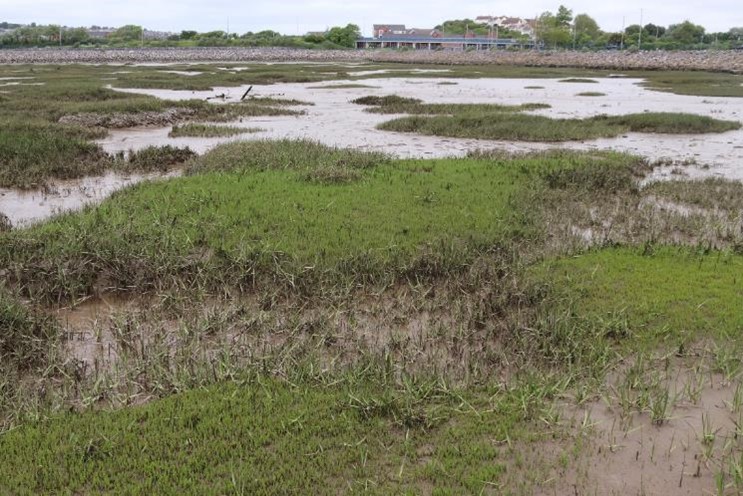
Salicornia and the marshy backshore with the current causeway
How this shoreline must have changed since 1896 when a causeway was constructed to provide easier access to the ‘Island’ for visitors who previously had had to negotiate the tides, like us, or take the more fashionable paddle-steamer provided by the Yellow Funnel Line. With its current road and rail links, the causeway now dominates the view and provides a hard, static structure against which rough seas must occasionally pound. Considerable siltation must have occurred following the causeway’s construction despite the shoreline looking so long established today. There were, however, constant reminders of the ephemeral nature of this shore as we moved towards The Knap. Fresh footprints from dogs, humans and birds criss-crossing over the sands would be washed away by the incoming tide within hours. The bubbling natural spring in the sands adjacent to Watch House Bay would also be engulfed by the incoming salty waters. Finding this spring was the highlight of my visit, having never seen or heard anything like this before. Photographing and videoing it from all angles and to the accompaniment of a constant burbling sound resembling an overactive coffee-percolator, I was fascinated by the endless bubbling up of the freshwater into the beach pools – Barry’s pseudo-volcanic world!

Freshwater spring on beach close to the Old Harbour
The Knap – the lake, lido and limestone pebbles
Ascending the slipway onto the Knap one is immediately aware that the coast here has a much more genteel and relaxed feel about it. Immediately behind the seafront immaculate public gardens surround a large artificial lake, the inspiration for Gillian Clarke’s poem ‘Cold Knap Lake’. This poem, which captures Clarke’s haunting childhood memories of the lake, alludes to a very different, more chilling experience than ours. Even the sizeable population of ducks and swans seemed to be enjoying the peace and calm of the Knap that day, silently huddling in groups around on the water’s edge. Previously one of the largest cold-water lidos in the UK, there have been campaigns to rebuild the attraction, but, despite considerable celebrity and community support, these have not been successful in contrast to similar efforts at Clevedon on the other side of the Estuary. However, I was to find out later that there are indeed new plans afoot for this area: an exciting local community scheme has been proposed to breathe new life into the iconic but somewhat dilapidated Old Lifeguards Building to create The Reef Coastal Exploration Centre (see inset below).
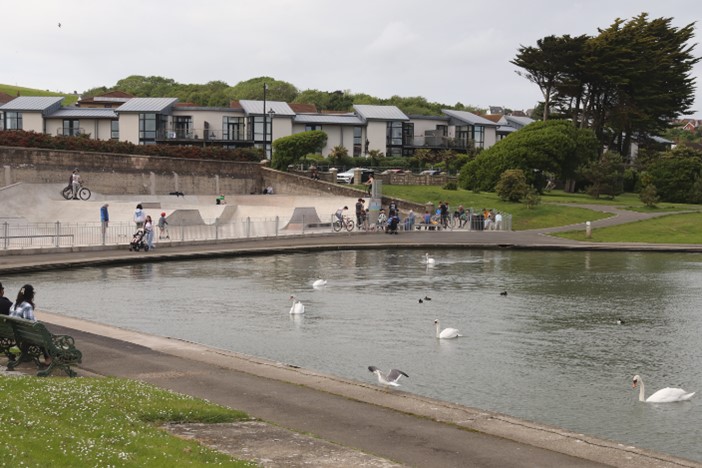
Knap Lake at Cold Knap
Y RÎFF/THE REEF: COASTAL EXPLORATION CENTRE, COLD KNAP – This community scheme hopes to transform this old building which was originally the cloakroom for the Knap Pool Lido in the 1920s before it became the home of the Rhondda (Cold Knap) Lifeguard Club. Plans include: A new up-to-date space for the Rhondda Lifeguards Club, offices for the Wales Coastal Monitoring Centre and an educational and community space. Find out more at: https://yriff.org/
Whilst the lake is a key attraction at Cold Knap for visitors and the many of the locals residing in the smart residential areas behind the seafront, it was the long pebble beach of gleaming white round limestone pebbles that appealed most to us. This stunning, long, steeply-shelving beach stretches in a great arc from the Knap around the bay towards and beyond Porthkerry to the west. This impressive natural feature is a reminder of the power of the sea and winter storms on beaches which are exposed to incoming southwesterlies. We contemplated the incredible strength of the winter storms which had created the beach and each of the ridges on the beaches seaward side. We feared what future climate change might mean for this beach system, given the road and cliff will not allow the beach system to roll back. Indeed, all the beaches we’d visited on our walk suffer from this same issue, making the problem of coastal squeeze a real likelihood. No wonder that the community is being encouraged to get involved in the monitoring of the nearby beach at Whitmore Bay through the CoastSnap Project.
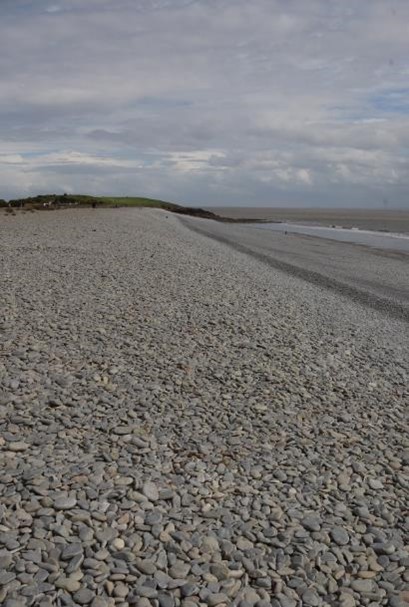
Storm beach at the Knap
The CoastSnap Project – ‘CoastSNAP, developed by the University of New South Wales, has become a beacon of community engagement and environmental stewardship. Over the past year, 3000 public-contributed photos have flooded in, capturing the ebb and flow of our dynamic coastlines. These snapshots serve as vital puzzle pieces, validating coastal surveys and informing our understanding of change in the face of rising sea levels. From storm events to the condition of coastal defence assets, CoastSNAP empowers us to protect our shores collectively.’ (Gwyn Nelson, WCMC). Find out more: General CoastSnap website: https://www.coastsnap.com/, CoastSnap in Wales: https://www.wcmc.wales/coastsnap

CoastSnap site at Barry Island
Walking across the pebbles of the more-or-less flat upper beach, our attention soon was diverted to watching the wind surfers who had presumably also conquered the demands of the descent of such a very steep beach on the seaward side! Knowing that there is a National Coastwatch Institution station at nearby Nell’s Point (see below), we could relax watching thrilling acrobatics of fearless wind surfers who seemed to be enjoying the challenges associated with the increasingly choppy seas. We also admired the pretty flowers of the many plants along the backshore which provided welcome bright dashes of colour against the grey-white pebbly beach. These include the occasional mauve native marsh-mallow alongside much more dominant plum and white valerians, presumably escapees from nearby gardens.
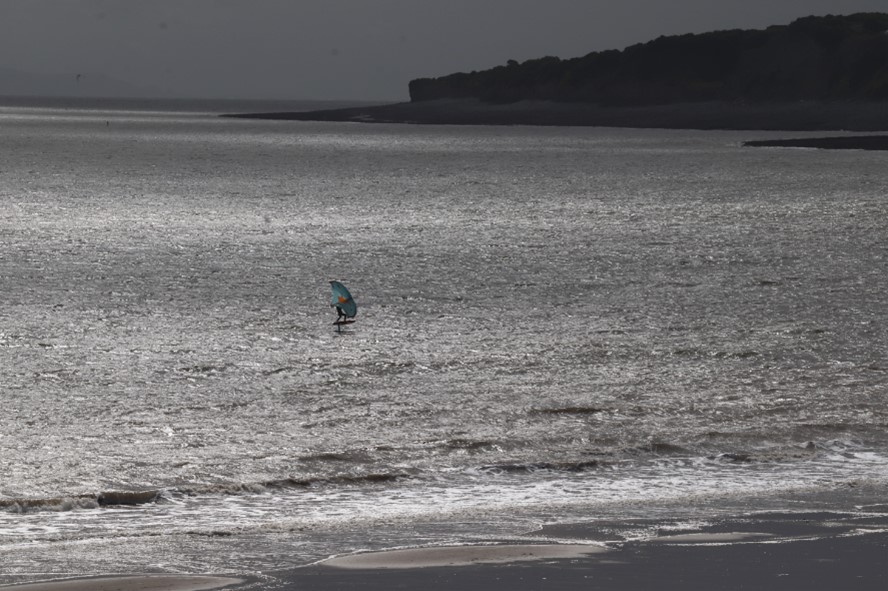
Wind surfer’s acrobatics on the beach at Cold Knap
National Coastwatch Institution (Nells Point) – ‘NCI Nell’s Point opened in 2017. Volunteers keep a daylight watch over the coast for anyone/vessel in difficulty and raise the alarm to Milford Haven Coastguard. Watchkeepers also respond to requests for information from the Coastguard on possible casualties etc. Sully Island causeway is a good example of how folks get into difficulty as it covers over at about half tide and folks unaware will be cut off. So, the watchkeepers at Nell’s Point will inform the coastguards who will arrange a rescue. Over the last 5 years or so there has been a significant increase in both water users and the type of personal watercraft used. Open water swimming, in particular, has increased greatly around Barry with new clubs and societies being formed.’ (Nick Rodgers, Barry). Find out more: National Coastwatch Institution
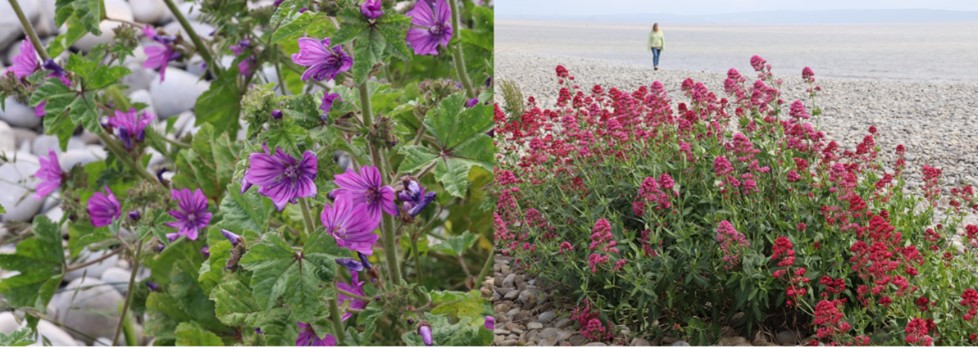
Flowers on the backshore at Cold Knap
No introductory visit to Cold Knap would be complete without viewing the site of the old roman villa, a late third century ‘mansio,’ thought to have been a guest house for travellers. Set neatly and strangely in line with the modern neighbouring apartment properties, the floor plan of villa was very clear to us – with over twenty rooms arranged around a courtyard, this was no ordinary B&B! Given its proximity to the coast at the time (the gardens on the Knap are thought to have been an inlet of the sea), it’s likely that many of its visitors would have come by sea rather than by land although the A48 lies along the route of an acknowledged roman road. Archaeologists suggest that the Romans would have needed many stopping points along the Bristol Channel given the capability of their boats at the time.
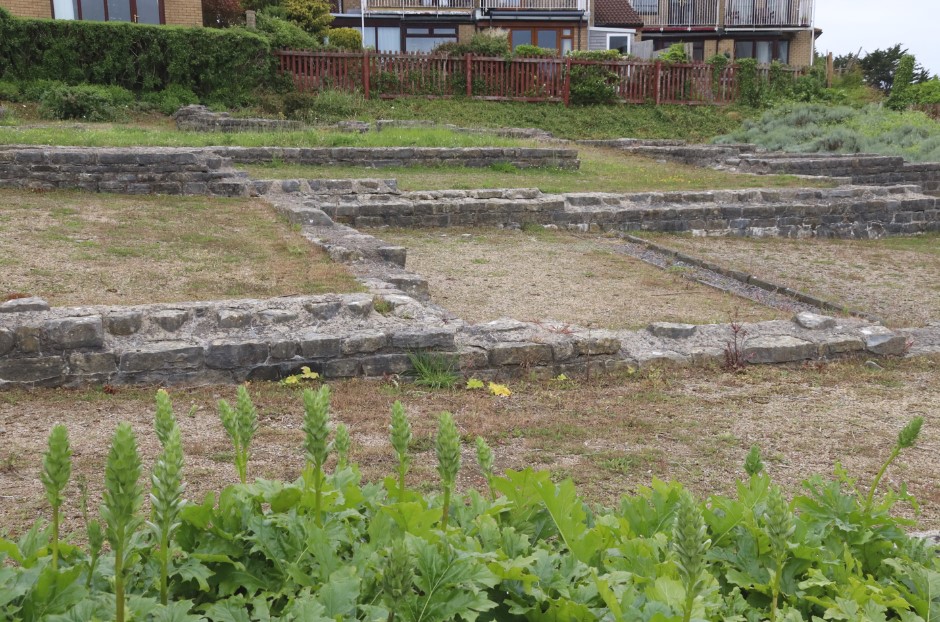
Roman villa at Cold Knap
Over the hills and not so far away, to Porthkerry
After our gentle stroll around Cold Knap we were in for some more strenuous exercise. The antics of a group of energetic sea gulls which were riding the thermals were, however, a most welcome distraction as we ascended the steps and steep grassy slope above the Knap. As we continued along the coastal path towards Porthkerry, I was reminded of my first outing here after the initial travel constraints of COVID. The view from the top of the hill of the wide expanse of the Bristol Channel offshore at the time had been quite stunning, almost shocking. Today, it was just a little dull given the greyness of the cloud cover and sea. However, we were shortly into the beautiful deciduous woodland which hugs the coast and were soon admiring some of the majestic and mature trees which are so prized here.
All too soon, we were descending an even steeper slope and longer set of steps down to Porthkerry Country Park. With no time to look for the pirate treasure which legend suggests lies hidden beneath the Golden Stairs, and tired from our earlier exertions, we only made a brief visit to the pebbly shoreline. Looking back along the storm beach to the Knap, we admired the impressive cliffs which surround the bay, reminiscent of those further west along the Glamorgan Heritage Coast. However, even I did not have the energy to explain the geology at this point, so we made our way to the café for a very late lunch. Crossing quickly over neatly laid out boardwalks and glancing at the many interesting information panels along our route, we soon realised that we’d really need to have another visit to really appreciate the attractions here. So, we just sat outside and ate our well-earned lunch and enjoyed the view of the impressive Victorian viaduct which dominates the valley here, trying not to contemplate our return up those not so Golden Stairs.

View towards Cold Knap and Barry from Wales Coastal Path
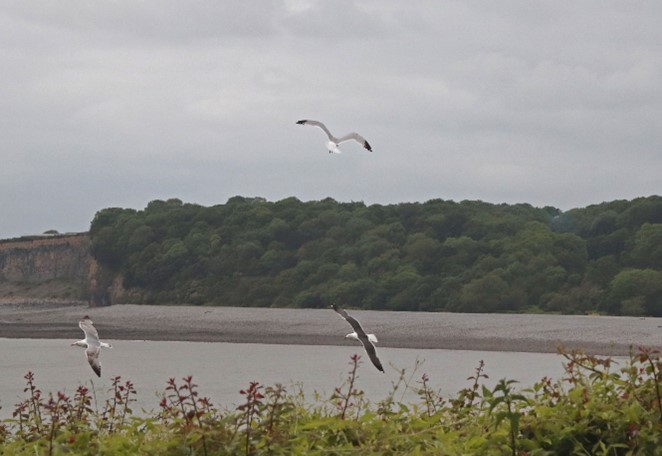
Seagulls enjoying the thermals!
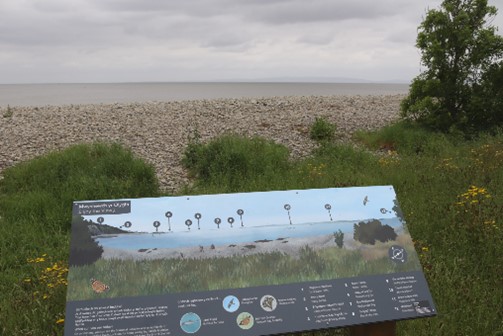
Porthkerry beach with information panel
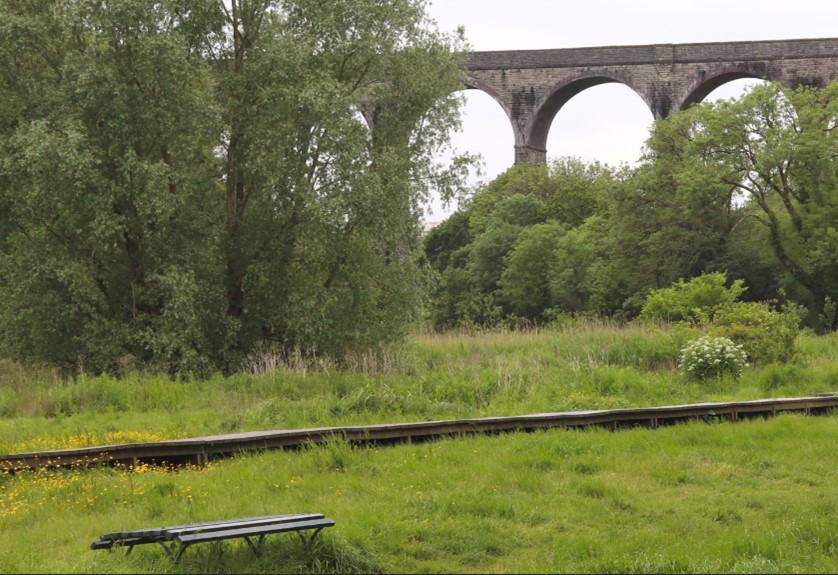
The Victorian Viaduct at Porthkerry
Final thoughts
Another fascinating coast where there is such diversity of shoreline within a relatively short distance. Even on a relatively dull day, the seaviews of the islands and Somerset coast on the other side of the Channel are most impressive and so, why not sample these Barry delights along the Wales Coastal Path? If my writing hasn’t tempted you so far, then I’m sure the perspectives of three very proud Barry locals, provided below, will inspire!
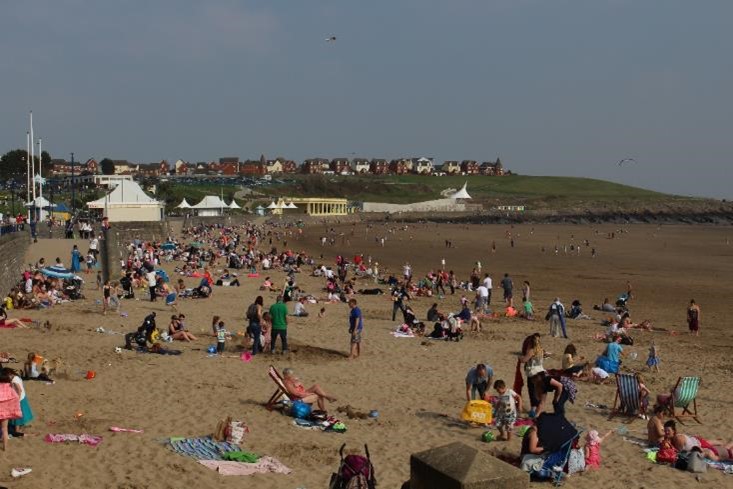
Whitmore Bay on a previous sunny day!
Nick, local resident and active member of the local National Coastwatch Station
My connection with the Estuary/Barry: I’ve been a resident for the last 25 years, having returned to my hometown. I learned to swim and sail in the waters around Barry. Our family are regular beach users, and I am a watchkeeper with NCI Nell’s Point on Barry Island.
What I like most about the Estuary/Barry coast: I really enjoy the different moods of the weather and water combined
Future challenges – dealing with the increase in water usage and keeping folks safe, ensuring the water quality is good, dealing with new erosion points as sea levels rise
How I imagine the Estuary/Barry coast in 2050: Sea levels will have increased by 2050 which will make the high water mark very interesting! Also, I suspect the use of the water will continue to increase with possibly larger vessels and a number of as yet uninvented methods of taking to the water!

Gwyn, local resident and Manager of the Wales Coastal Monitoring Centre
My connection with the Estuary/Barry: My great-grandad was a commercial diver in Barry docks with an old school copper diving helmet/air hose! Every generation in my family has worked in the marine sector since. I’ve maintained a marine career as a skipper/hydrographer and now coastal surveyor, I’m forever drawn to these shores and I appreciate them more as I get older. I’m a voluntary lifeguard coach and I am now able to share my childhood coastal experiences with my own children.
What I like most about the Estuary/Barry coast: The quiet spots. Going for runs across the deserted limestone intertidal at Porthkerry or paddle boarding the sheltered waters at the Old Harbour, just being next to the coast has become important to me.
Future challenges: Most topical is water quality from CSO’s and then managing an increase of users but there are plenty of successful models to learn from. Long-term climate change impacts with sea level rise and increased flooding/erosion is also a significant challenge.
How I imagine the Estuary/Barry coast in 2050: More populated but well managed. In recent history, Barry has been underutilised, until COVID when locals and new residents flocked to the coast to make the most of its wellbeing benefits. COVID has unlocked Barry’s natural potential with increased walkers and sea users, I think Barry will increase in popularity and Whitmore be more like a ‘city’ beach but I think increased traffic will be managed sustainably and add value to locals and tourists.

Janet, local resident and former Severn Estuary Partnership Manager
My connection with Barry: I was born and bred in Barry. My maternal grandparents moved here, when Barry was thriving as a seaport and an ever-expanding town. They had a stall on Barry Island fairground selling ice cream and candy floss to coal miners who came to Barry Island each year for their one annual trip to the seaside. In winter months my grandfather sold coal to homes in the west end of Barry from his horse and cart.
As a young adult my all-consuming interest was sailing, and I became the first woman in Barry Yacht Club to become a qualified Offshore Yachtmaster. I became an Auxiliary Coast Guard working day and night shifts at the Nells Point Lookout Station, accessed through Butlins Holiday Camp at that time. I wrote a monthly column bringing news of the Bristol Channel to Yachting Monthly magazine readers for many years. Later, I became a yacht broker based at Barry Harbour, and then the admin officer for the Flat Holm Project, which included crewing on the Flat Holm Island boat and giving guided tours to island visitors.
After becoming intensely interested in the natural environment of our seas and coasts, I eventually became the Project Manager for the Severn Estuary Project, tasked with developing the first-ever management strategy for the Severn Estuary. I revisited many of my sailing haunts on the Estuary, but this time facilitating stakeholder workshops for a diverse range of professionals and recreational users.
What I like most about the Barry coast – Barry town (including Barry Island) is blessed with five different beaches: Porthkerry Beach and the Knap beach forming a pebble bay, plus the sandy beaches of Watchtower Bay, Whitmore Bay and Jackson’s Bay. I like the dynamic environment caused by our second highest tidal rise and fall in the world. I’ve visited the Bay of Fundy in Canada, the only place in the world with a greater tidal range than the Severn Estuary. The Bay of Fundy is marketed to tourists as a place where you can “walk on the ocean floor” when the tide is low. However, for me the beauty of the cliffs of the Vale of Glamorgan Heritage Coast is even more dramatic, as are the low-lying wetlands and wildlife sanctuaries further up-channel, where rivers from valleys and fields flow into the Estuary
Future challenges – achieving and maintaining good water quality. This concern includes the water quality on all the rivers flowing into the estuary. Of course, flooding and coastal defence issues are with us too as storms seem to be increasing and global warming continues.
My vision of the coast in 20/50 years time – I hope that the Estuary and all that it offers will be cherished and its natural areas carefully managed for future generations to enjoy. I hope that people will understand and value this dynamic environment, where the waters will never be a clear blue, because the seabed and its sediments are constantly churned and held in suspension by the immensely powerful tides and currents.

Further information
If you want to find out more about this walk and its interesting features check out the following websites:
Online walks:
Weatherman walking – Barry to Rhoose Point
Audio stories to accompany your walk
Historical aspects:
Geological aspects:
Discovering geology – crinoids
Severn Estuary Partnership Welcomes Vice-Chair
Dr Rhoda Ballinger Welcomes Simon Bunn as the Vice-Chair of the Partnership
“As Chair of the Severn Estuary Partnership, I’m delighted to announce that Simon Bunn from North Somerset Council has become our first SEP Vice-Chair. Taking on this new role for the next three years, Simon will be a key contact and representative for SEP on the English side of the estuary, championing SEP and and acting as a spokesperson at external meetings, as appropriate. With Simon’s wealth of experience and knowledge of the estuary and related matters, he will contribute so much to the Partnership in this role, as I’m sure you’ll all agree from reading his biography below. We look forward to working with Simon in his new position and wish him every success in this role” – Dr Rhoda Ballinger, SEP Chair
Simon is a civil and structural engineer by training and spent 20 years with consultants delivering multi million pound commercial and educational development across the UK and abroad. This also included the company acting as expert witnesses for maritime insurance companies and port refurbishment. He was appointed by Cambridge City Council as the first Sustainable Drainage Engineer in local government and worked in a multidisciplinary team on over a billion pounds worth of growth in the sub-region. He was an early proponent of this nature based approach to flood risk management. Elements of Simon’s work informed the development of the Flood and Water Management Act and he actively promoted the approach at national and international conferences, providing oral evidence at the Water All Party Parliamentary Group. He was a member of one of the first catchment partnerships and collaborated on delivering fish passes and other improvements on the River Cam. He was Honorary Engineer to Hobsons Conduit Trust Charity.

Simon Bunn, Vice-Chair of SEP
After moving to Somerset, Simon joined the Internal Drainage Board working on regulating the impacts of nationally significant infrastructure and representing the interests of the farming community. He currently leads a small Flood and Water Team at North Somerset Council (NSC), with an extensive range of work that includes statutory reservoir management, delivering natural flood management and property level flood resilience schemes. Currently he is running a series of projects to improve NSC owned Victorian sea walls, using a combination of modern and traditional techniques. He is heavily involved in development management within the district and provides expert evidence at planning appeal enquiries. He represents NSC on the Bristol Avon Catchment Partnership, is the current Chair of the Association of Severn Estuary Relevant Authorities and Vice Chair of the Severn Estuary Coastal Group. He is also an accomplished photographer and has had work exhibited at the RWA. He is a long distance walker and is never long without a sandy boot.
Simon says, ‘I am delighted to be vice chair of the Severn Estuary Partnership, living and working on the Estuary. I’m fascinated and motivated by the unique specialness of the natural, cultural and historic nature of the estuary. I am committed to finding ways in which the community, wildlife and industry can successfully coexist both now and in the future in this sometimes challenging but beautiful environment. I hope to be able to play a small part in continuing the important work of SEP especially at a time when the estuary is under many pressures, including the profound changes that rising sea levels will bring.’
Shore insights: catch up on our SEP Chair’s recent walk along the Severn and get involved in future walks
Written by Dr Rhoda Ballinger, SEP Chair
What are the walks about?
Although I’ve been associated with the Severn Estuary Partnership for years, since taking over as the Chair of the SEP Management Group and retiring from my academic post in Cardiff University, I’ve been keen to explore the shores of our Estuary further and to share my thoughts and photos in a monthly blog/posting. Over the next twelve months, through a series of monthly walks around the Estuary, I hope to cover at least one section from every local authority’s shoreline. As part of this project, I hope to meet people from around the Estuary and find out what makes the Estuary so special to so many. Hopefully, it will inspire you too to get out and explore our Estuary too and share your observations and thoughts as well!
If you’ve any suggestions for particular sections I should visit or people I should talk too please do get in touch through the SEP email (Severn@Cardiff.ac.uk)!

View from path towards Penarth and Cardiff
April 2024 Walk: Penarth – Lavernock Point (Vale of Glamorgan)
To start off my series of walks, I had the good fortune to walk the Penarth to Lavernock Point stretch of coast earlier in the month with Heather Green, from Arizona State University. Based in Cardiff University for the next few months, Heather is working around the Estuary with SEP and others on an interdisciplinary art project examining and celebrating the ecology and culture of our Estuary.
The Cliff Top Path
We started our walk along the cliff top path at Penarth, where the famous French impressionist painter, Alfred Sisley captured the character of this dynamic coast with its unique geology and spectacular tidal range well over a hundred years ago. Unlike the painting, there was constant hustle and bustle along the cliff path as we strode alongside dog walkers, young family groups and others enjoying the coastal vistas – well at least, until we reached the end of the tarmacked path. This marks the end of a stretch of open green space fronting some impressive, spacious and highly sought-after detached houses. Beyond this, we had the path to ourselves and were able to enjoy vistas across the estuary through occasional openings in the woodland. However, along the entire path there were frequent reminders of the active, eroding nature of the cliffs, something we were to experience first-hand later in the day.
Lavernock Point
At Lavernock Point we ventured into the graveyard surrounding the little limestone church of St Lawrence. Founded by the monks of St Augustine’s Abbey across the Channel in Bristol, this was once the parish church for the manor of Cosmeston and associated medieval village. Now, its new neighbours are a small new housing development and the popular Marconi Holiday Village, with self-catering chalets hugging the cliffs to capture ‘spectacular views across the Bristol Channel.’
We reflected on how much the community here must have changed over the centuries, but how the whole land/seascape might be transformed further by some more ambitious proposals for tidal energy generation in the Severn, most notably the previously discussed ‘Cardiff Weston’ barrage, extending from this point across the Channel to Brean Down. We await the findings of the Western Gateway’s Independent Severn Estuary Commission which will ‘re-examine the potential for a world leading tidal energy scheme’ to see if and what will be proposed for the Estuary.
We were reminded of further estuary connections and great technical breakthroughs as we read the bronze plaque commemorating Marconi and Kemp’s historic achievement of 1897. At this very point, on 13 May 1897, Marconi transmitted the first-ever radio transmission across open sea to Flatholm.
The foreshore at Lavernock Point
Carefully traversing the cobbles and rocky shore platform at Lavernock Point, we were treated to broad open views across the estuary to the islands and beyond as well as hidden treats in the innumerable rock pools and on the rock ledges themselves. As someone who occasionally likes to attempt landscape photography, the views across the Estuary always fascinate me. The ever-changing tides, sea state, weather and offshore boat/shipping activities make for endless photographic opportunities, even if they’re not always realised! Today, it was a particularly calm still day with little offshore activity although there was some distraction as the occasional but somewhat elusive oyster catcher flew by.
However, it was the ecology and geology of the rock pools and ledges and the artistic forms, textures and micro-seascapes created by them which were our focus on the foreshore today. As Heather is particularly interested in our rich intertidal areas which are only revealed at low tide, we spent awhile, and with varying degrees of success (at least on my part), trying to capture these hidden worlds photographically. In the slightly hazy mid-afternoon sunshine, the silvery mucus/slime trails of sea snails (molluscs) made intricate and complex abstract patterns on the rocks. Innumerable limpets and white beach lichen encrusted the harsh environment of the rock ledges. There was also added visual interest from occasional periwinkles, oyster shells and whelks. The colour of some bright red shiny shells, really ‘popped out’ from the underlying wet grey limestone slabs. As the tide was still receding, we were also able to witness the ever-changing worlds of turbid shallow rock pools in the mid-shore which were supporting the delicate feathery branches of floating ‘Coral Weed’ (the red seaweed, Corallina officinalis) and various small brown, branching wracks.
The similarities between some of the living molluscs on the shore and those from around 200 million years ago, now fossilised in the rocks and pebbles on the beach, was staggering. The analogies continued – we were looking at our own mini-‘Jurassic Park, comprising alternating beds of lighter coloured limestones and dark shales from the Lower Lias (Jurassic). These rocks were formed in a former marine environment, the configuration of which was controlled by an ancient Bristol Channel Basin. Perfectly-formed fossilised ripple marks in some of the rock slabs lay strewn across the beach were lying on top of- or at very close to -ripples made only hours before our visit in the muddy sands of the foreshore. The occasional impression of an ammonite, now of course long extinct was a reminder of the very different world of 200 million years ago.
The beach walk back to Penarth
Fortunately, we had a lovely calm day in which to explore the hidden gems of the beach and cliffs as we walked back from Lavernock Point as the tide began to turn. This is a much-celebrated stretch of geology culminates at its southern end in the amazing sequence of rocks at Penarth Head which has been designated as a Site of Special Scientific Interest. Unfortunately, on this visit we didn’t have time to explore Penarth Head itself or the site of the ‘dragon robber,’ meat-eating dinosaur (Dracoraptor hangigani), which was only discovered ten years ago close to Lavernock Point. However, we were able to still appreciate some of geology of the foreshore and cliffs as we walked back in time, traversing the even more ancient rocks of the Triassic. The distinct and brightly-coloured red and grey green mudstones of this stretch of coast are the remains of lake sediments laid down when this part of the ‘estuary’ was experiencing hot arid, desert-like conditions – certainly, not like those we experienced on our walk! Attractive pink and white gypsum forms distinctive, discontinuous bands in the cliffs along here, but given the active erosion that afternoon, we had to make do with just examining the large pink and white lumps of it which had recently fallen onto the beach. Interestingly, there was a relatively small and short-lived industry just east of Lavernock Point, based on this mineral. Alabaster, as it is more commonly known, was mined here from the 1872, and supplied many of the fine buildings of Cardiff with an ornamental stone particularly for indoor use. Indeed, the main staircase of Main Building in Cardiff University, where the Severn Estuary Partnership Office is housed, is adorned with an impressive display of pink alabaster!
Apart from the lumps of alabaster on the beach, we had further reminders of active cliff and beach processes, including armoured mud balls, curious rounded balls of mud clad with small jagged stones, which were scattered across the foreshore. Alongside the gentle noise of the sea lapping up on the beach, there was a constant ‘swish’ as slivers of shaley materials slid gently from the cliff profile. Then, a great ‘thud’ sounded as a dining table-sized slab of limestone crashed onto the upper beach! Unfortunately, the event was all over in a few seconds and, as I rushed to get my camera, all that remained was a small cloud of rock dust! A combination of undercutting from the base of the cliff, the weathering effect of tree roots intruding into the joints and cracks of the rocks of the upper cliff and the impact of our recent extremely wet weather certainly were making their mark that afternoon as we witnessed a number of further mini-landslides, all of which eluded my camera skills. As we walked further towards the seafront at Penarth, the need for human intervention for controlling these erosive processes became ever more apparent. Toe-protection structures eventually made way for full sea defences in front of the RNLI lifeboat station and the promenade beyond, confirming the need for the Hold the Line shoreline management policy for this northern section of our beach walk.
Overall Impressions
Back on the esplanade in Penarth as we sipped much-needed beverages at one of several establishments, we reflected on our experiences from the walk. Although I’ve walked this stretch of coast innumerable times before, introducing it to Heather had made me realise what a very special, unique sea/landscape this is. There are not only breath-taking views across the Channel, but also hidden worlds and amazing ‘natural art’ in the rocks and rockpools. Heather, whilst coming from the contrasting – and to us Severn folk, the much more ‘exotic’ tidal landscape of the Gulf of California – also seemed impressed with our ‘finds.’ Later commenting on some of her first impressions of our muddy shores, she highlighted the sense of mystery and the layers of history which have created our special shores.
FURTHER INFORMATION ON THIS WALK
If you want to do this walk along the Wales Coast Path, make sure you’re prepared for the weather and please take note of the tides before you go, ensuring you do the walk along the beach on a falling tide. Suitable footgear is also essential on the somewhat slippery and large cobbles, particularly on Lavernock Stony Beach.
If you want to find out more about this stretch of coast, check out the ‘Coast and Pier Walk’ – Sully to Penarth Pier Walk (5 miles / 8 km). See: https://assets-global.website-files.com/602452bf511ad639c3e8aab6/605ded4492408acf33e52ebc_5-Coast-and-Pier-Walk-online-leaflet-English.pdf
Further sources of information
Cosmeston Country Park and Medieval Village – https://www.valeofglamorgan.gov.uk/en/enjoying/Coast-and-Countryside/cosmeston-lakes-country-park/Cosmeston-Lakes-Country-Park.aspx
The dinosaur discovery at Lavernock Point – https://www.theguardian.com/science/2016/jan/20/welsh-dinosaur-bones-confirmed-as-new-jurassic-species
Marconi and Lavernock Point –
https://www.visitthevale.com/inspiration/whats-the-vales-link-with-marconi;
South Wales Geologists’ Association leaflet on the Penarth-Lavernock Point coast — http://swga.org.uk/wp-content/uploads/2020/01/Walk_Penarth.pdf
Western Gateway and the launch of the Severn Estuary Independent Commission – https://western-gateway.co.uk/western-gateway-launches-severn-estuary-commission-cardiff#:~:text=The%20estuary%20is%20home%20to,of%20the%20UK’s%20electricity%20needs

Heather exploring the rocky coast at Lavernock Point

View from cliff top back towards Penarth (from a previous even sunnier walk)
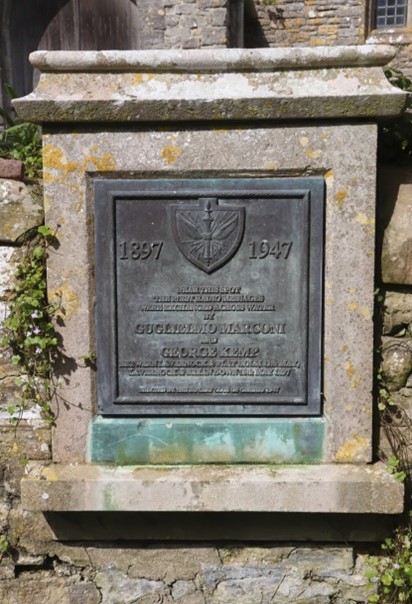
The plaque celebrating the first-ever radio transmission across the sea
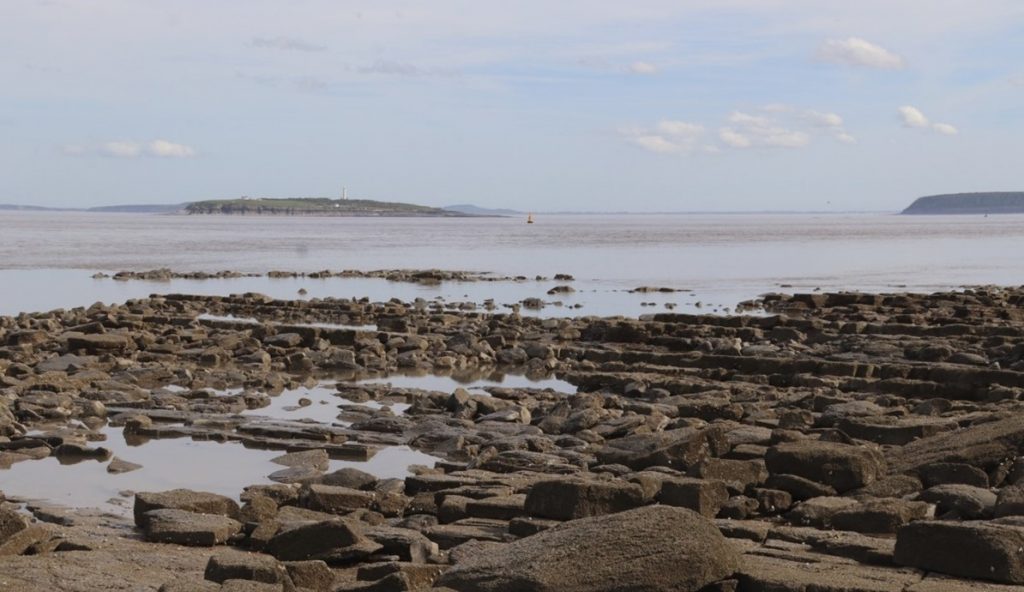
View from Lavernock Point across to the islands
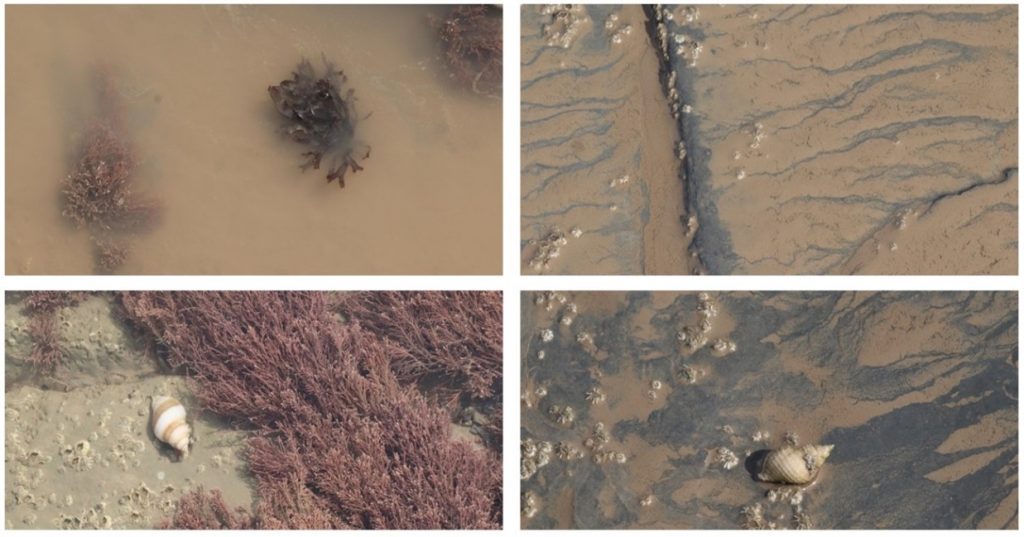
Foreshore worlds near Lavernock Point
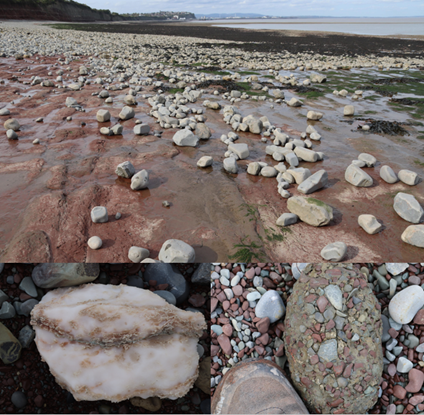
Some finds on the beach – red mudstones, pinky white gypsum (alabaster) and armoured mudballs
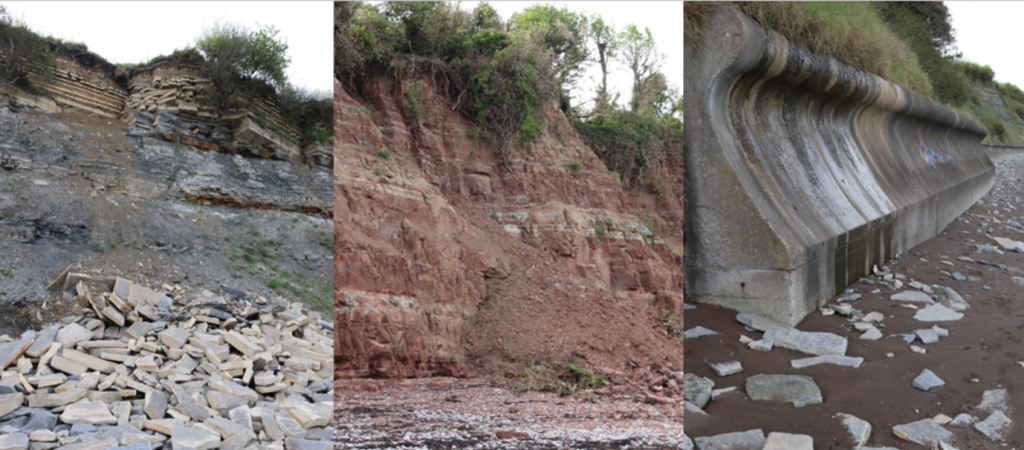
Active cliff processes along our beach walk
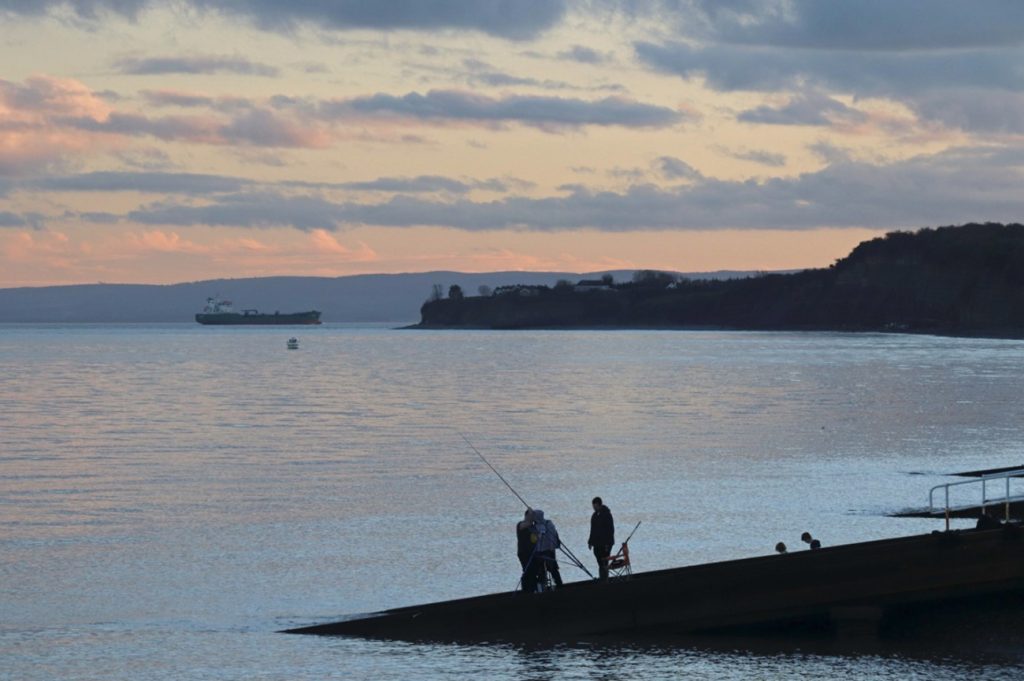
Evening at Penarth (Jan 2023)
 Severn Estuary Partnership
Severn Estuary Partnership